Ressources de récupération BBL

Ressources de récupération BBL
How to Sit on a Boppy Pillow After BBL
- #"bbl Pillows" clearance Sale
- #"bbl Pillows" Sale
- #bbl booty pillow
- #bbl booty pillow after surgery
- #bbl booty pillow bombshell booty pillow
- #bbl booty pillow for sale near me
- #bbl booty pillow near me
- #bbl booty pillow store near me
- #bbl butt pillow
- #bbl pillow
- #bbl recovery pillow
- #brazilian butt lift pillow
- #pillow bbl

Ressources de récupération BBL
Warning!!! Things NOT To Do After Having a BBL
- #360 lipo foam
- #5 years after liposuction
- #ab board after lipo
- #abdominal board
- #after bbl care
- #after surgery bbl pillow
- #amazon bbl pillow
- #Are BBLs safe?
- #arm lift without surgery
- #ass bed
- #back arch stretcher
- #bbl aftercare
- #bbl bed
- #bbl bed with hole
- #bbl booty pillow after surgery
- #bbl cushion
- #bbl exercise
- #bbl mattress
- #bbl packages
- #bbl pillow
- #bbl pillow for car
- #bbl pillow for sleeping
- #bbl pillows
- #bbl pillows near me
- #bbl post surgery supplies kit
- #bbl recovery
- #bbl recovery pillow
- #bbl supplies
- #best bbl pillow
- #best bbl pillow after surgery
- #best bbl pillow for driving
- #best bbl pillow for sitting
- #best bbl pillow for sleeping
- #best bbl pillows
- #best compression garment after lipo
- #big booty pillow
- #bombshell booty pillow
- #boppy pillow for bbl
- #Brazilian Butt Lift
- #brazilian butt lift bed
- #brazilian butt lift mattress
- #brazilian butt lift pillow
- #Can I drive with my BBL pillow?
- #Can I have my fupa lifted a few hours?
- #Can I lay on my back with a BBL pillow?
- #Can I sit on my butt after a BBL?
- #Can I sit on my tailbone after surgery?
- #Can I sleep on my side after BBL?
- #Can you sit down after a tummy tuck?
- #Can you sit stock straight on butt?
- #chin lipo recovery
- #chin liposuction recovery
- #chin liposuction scar
- #cryolipolysis side effects
- #curves your confidence
- #exercise after liposuction
- #eywordbbl bed
- #female pee device
- #female urinary device
- #female urination device
- #female urination devices
- #fluid pocket after surgery
- #foam board liposuction
- #foam liposuction
- #foams lipo
- #How did you fly home after a GG2?
- #How do people sit on plane after BBL?
- #How do you heal after BBL?
- #How do you know if you're fluffing after BBL?
- #How do you know if your BBL is healing?
- #How do you shower after BBL?
- #How do you sit down after BBL?
- #How do you sit in a car after surgery?
- #How do you sit on a BBL pillow in a car?
- #how do you use a female urinal
- #How long after BBL can I drink alcohol?
- #How long after BBL can I fly?
- #how long after bbl can i sit without pillow
- #how long after bbl can you sit on pillow
- #How long after BBL does it settle?
- #How long after BBL to fly?
- #How long can I sit up straight after BBL?
- #how long do you have to sit on bbl pillow after surgery
- #How long do you have to use a bbl pillow after surgery
- #How long do you sit after bbl?
- #how long to use bbl pillow after surgery
- #how much fat can be removed with lipo 360
- #how much fat can liposuction remove
- #How painful is a BBL?
- #How to sit after buttocks augmentation?
- #How to sit in a car with a BBL pillow?
- #How to sit in car after BBL?
- #How to sit on a plane after BBL?
- #how to sleep after a bbl surgery
- #How to sleep when you get a BBL and tummy tuck?
- #how to treat nerve pain after liposuction
- #how to use a back stretcher
- #how to use a female urinal
- #how to use back stretcher
- #how to use female urinal
- #is arm liposuction worth it
- #Is it okay to sit on a BBL pillow?
- #lipo 360 scars
- #lipo board
- #lipo board vs lipo foam
- #lipo foam and board
- #lipo foam boards
- #lipo foam pads
- #lipo gone wrong
- #lipo massager
- #liposuction boards
- #liposuction foam pads
- #liposuction foams
- #liposuction gone wrong
- #peeing devices for women
- #pillow butt
- #plus size bbl
- #plus size bbl shapes
- #post bbl care
- #post liposuction compression garments
- #post surgical pillows
- #seroma after lipo
- #seroma after liposuction
- #she pee device
- #sitting after BBL
- #sitting on bbl pillow after surgery
- #Sleeping after BBL drive you crazy?
- #sleeping without compression garment after lipo
- #sweat suit lose weight
- #uneven weight gain after liposuction
- #urinary devices female
- #vaser liposuction scars
- #weight sweat
- #what can't you do with a BBL
- #What does a BBL do?
- #What does the BBL recovery process entail?
- #what not to do after liposuction
- #When can I lay on the BBL?
- #when can i lift weights after liposuction
- #When can I sit for short time?
- #when can i sit on my bbl pillow after surgery
- #When can I sleep on my side?
- #When can I sleep on my stomach?
- #When can I stop sleeping on my stomach after BBL?
- #When can I stop using BBL pillow?
- #When can I stop wearing compression sleeve after BBL?
- #when can i use my bbl pillow after surgery
- #When can you start light stretching?
- #When can you stop using the BBL pillow?
- #When can you wear jeans after a BBL?
- #When do you start feeling better after a BBL?
- #When does BBL fat stop dying?
- #when to start wearing ab board after lipo
- #When will my BBL stop shrinking?
- #womens pee device
- #yesindeed
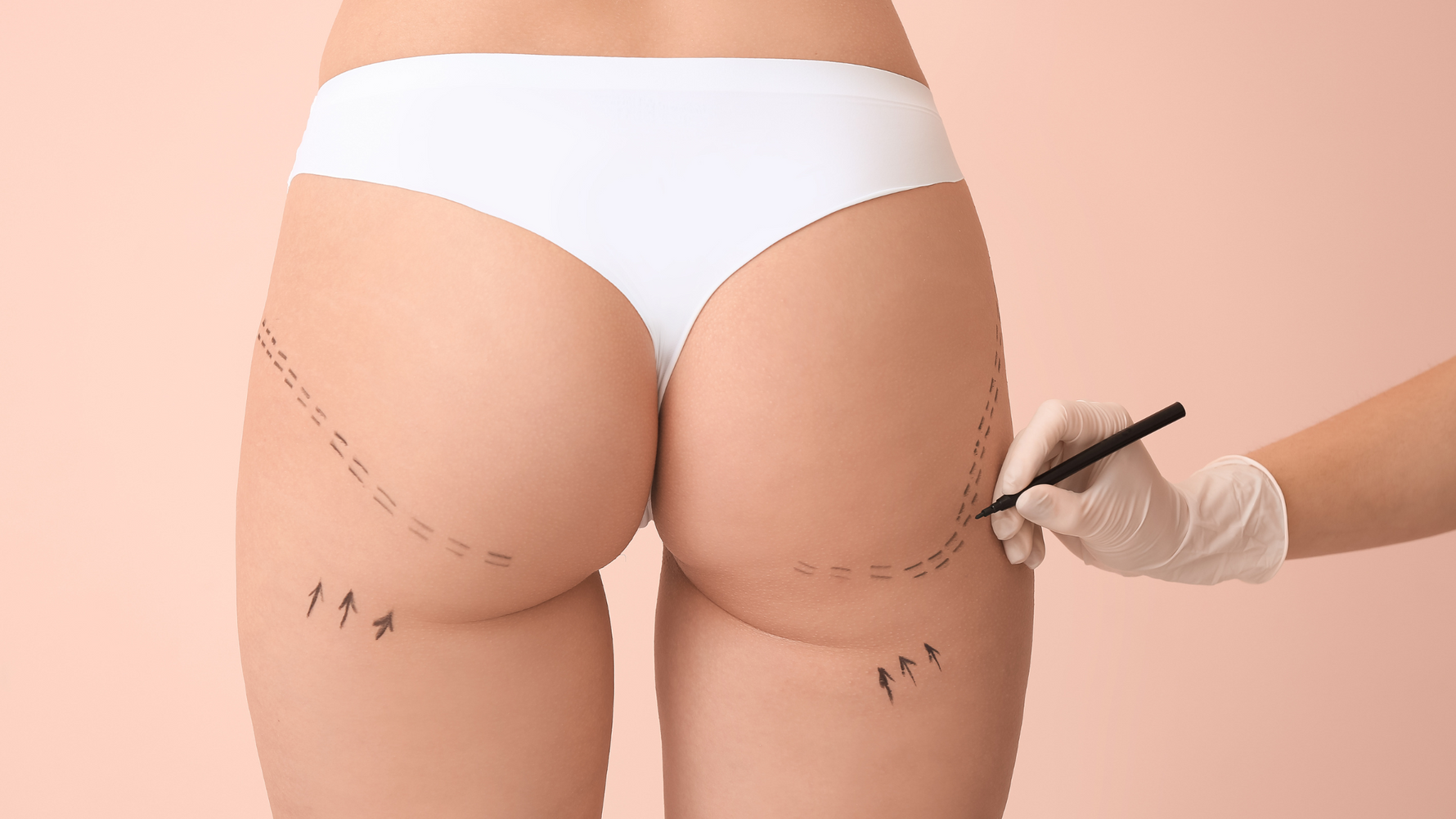
Ressources de récupération BBL
- #5 years after liposuction
- #a butt pillow
- #affordable bbl recovery kit Miami
- #affordable bbl recovery kit New York
- #affordable BBL recovery supplies
- #affordable BBL recovery supplies checklist
- #affordable BBL recovery supplies list
- #affordable BBL recovery supplies near me
- #affordable BBL recovery supplies online
- #affordable BBL San Diego BBL surgery St. Louis MO
- #after a bbl when can i sit
- #after bbl
- #after bbl butt lift care
- #after bbl care
- #after BBL How do you sit with a BBL pillow?
- #after bbl pillow
- #After BBL Surgery
- #after bbl surgery must haves
- #after bbl when can i sit
- #after BBL Where can I buy a BBL pillow?
- #after brazilian butt lift surgery
- #After Liposuction
- #After Liposuction - AirSculpt vs Traditional Lipo - Smartlipo
- #after surgery
- #after surgery bbl pillow
- #almohada BBL Brooklyn
- #almohada BBL California
- #almohada BBL cerca de mí
- #almohada BBL cerca de mí Atlanta
- #almohada BBL cerca de mí Miami
- #almohada BBL cerca de mí Phoenix
- #amazon bbl pillow
- #amazon bbl pillow for car
- #amazon bbl pillows
- #back pain relief pillow
- #bbl bed
- #bbl booty
- #bbl booty pillow after surgery
- #bbl mattress
- #bbl operation
- #bbl pillow
- #Bbl pillow after surgery amazon
- #Bbl pillow after surgery near me
- #Bbl pillow after surgery reviews
- #BBL pillow for airplane
- #BBL pillow for car
- #bbl pillow near me
- #BBL Pillow with Back Support
- #bbl pillows near me
- #bbl plastic surgery
- #bbl post op care
- #bbl recovery
- #bbl surgery
- #bbl surgury
- #bbl what is it
- #bbls
- #best bbl pillow
- #best bbl pillow after surgery
- #Best BBL Pillow for sitting
- #best bbl pillow near me
- #brazilia butt lift
- #brazilian butt lift aftercare
- #brazilian butt lift bed
- #brazilian butt lift faja I 2 590 bbl shapewear I 2 480 brazilian butt lift underwear T 17 170 brazilian butt lift panties I 17 170 bbl fajas I 3 140 brazilian booty lift underwear I 8 140 bbl waist trainer
- #brazilian butt lift mattress
- #brazilian butt lift recovery
- #brazilian butt lift recovery time
- #brazilian butt lift surgery
- #brazilian butt lift what is it
- #brazilian butt surgery
- #brazilian buttlift
- #brazilian buttlift surgery
- #butt lift procedure
- #how long after bbl can you sit on pillow
- #how long do you have to sit on bbl pillow after surgery
- #how long do you have to use a bbl pillow after surgery
- #how long to use bbl pillow after surgery
- #how to sleep after a bbl surgery
- #pillow butt
- #post surgical pillows
- #sitting on bbl pillow after surgery
- #surgery bbl
- #Understood. Here are the long-tail keywords with a single comma after each: Best bbl pillow after surgery
- #what is a bbl
- #what is bbl
- #what is bbl surgery
- #what is brazilian butt
- #whats a bbl
- #whats bbl
- #when can i sit on my bbl pillow after surgery
- #when can i use my bbl pillow after surgery
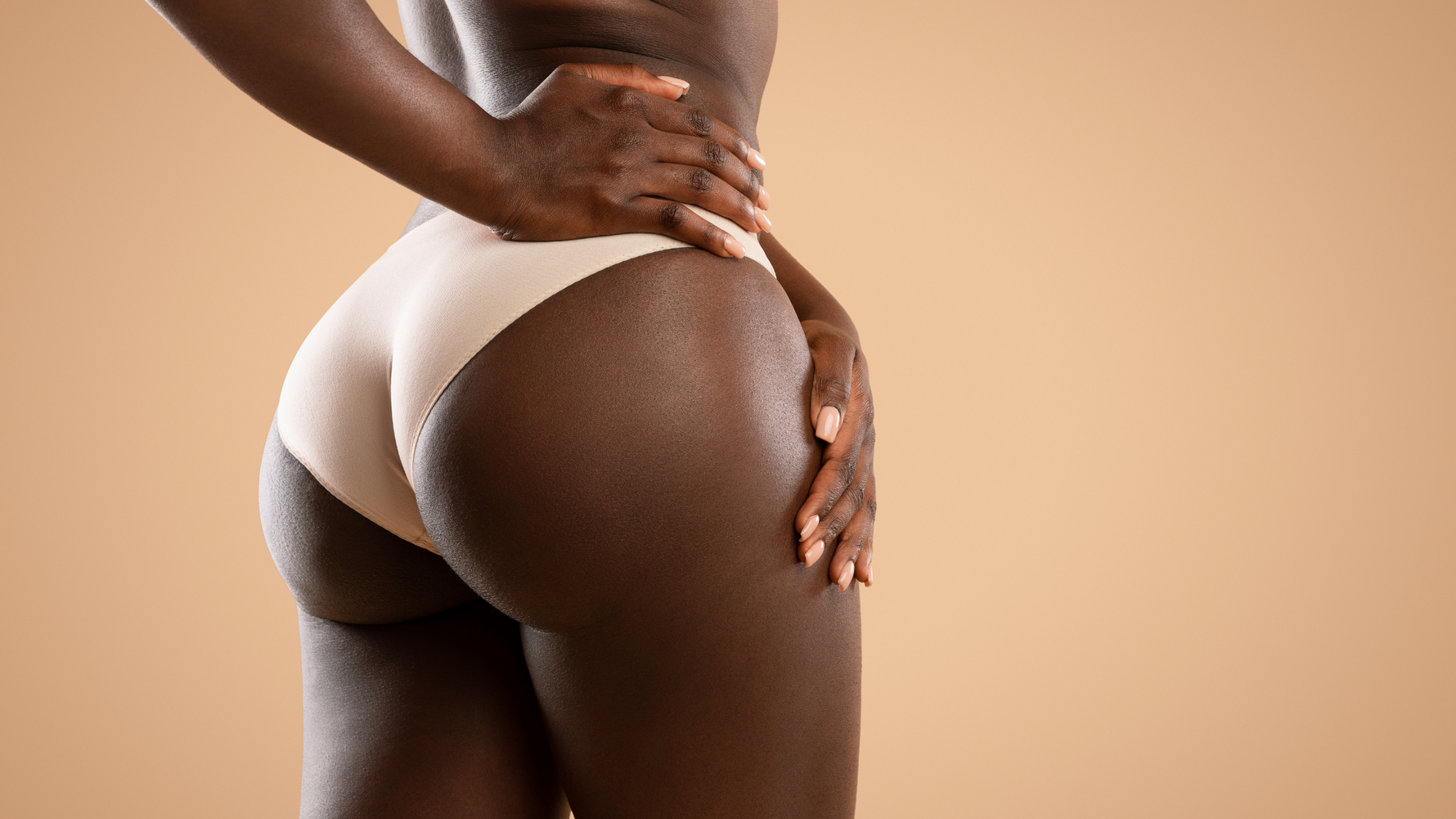
Ressources de récupération BBL
BBL Recovery Week by Week_ The Ultimate Guide
- #after surgery bbl pillow
- #amazon bbl pillow
- #amazon bbl pillows
- #bbl booty pillow
- #bbl booty pillow after surgery
- #bbl booty pillow bombshell booty pillow
- #bbl booty pillow near me
- #bbl booty pillow store near me
- #BBL Booty Pillow-BBL Supplies After Surgery kit
- #BBL Booty Pillow-BBL Supplies After Surgery kit-BBL
- #BBL Booty Pillow-BBL Supplies After Surgery kit-Brazilian butt lift
- #bbl booty pillows
- #bbl booty pillows near me
- #bbl butt pillow
- #bbl buttock lift booty pillow
- #Bbl pillow after surgery amazon
- #Bbl pillow after surgery near me
- #Bbl pillow after surgery reviews
- #bbl pillow after surgery sitting
- #BBL pillow for airplane
- #BBL pillow for car
- #BBL Pillow with Back Support
- #BBL Recovery Week By Week
- #best bbl buttock lift booty pillow
- #best bbl buttock lift pillow
- #best bbl driving pillow
- #best bbl pillow
- #best bbl pillow after surgery
- #best bbl pillow for car
- #best bbl pillow for driving
- #Best BBL Pillow for sitting
- #how long after bbl can you sit on pillow
- #how long do you have to sit on bbl pillow after surgery
- #how long do you have to use a bbl pillow after surgery
- #how long to use bbl pillow after surgery
- #how to sleep after a bbl surgery
- #sitting on bbl pillow after surgery
- #Understood. Here are the long-tail keywords with a single comma after each: Best bbl pillow after surgery
- #when can i sit on my bbl pillow after surgery
- #when can i use my bbl pillow after surgery

Ressources de récupération BBL
Does BBL Have Side Effects? Find out Here
- #bbl booty pillow after surgery
- #Bbl pillow after surgery amazon
- #Bbl pillow after surgery near me
- #Bbl pillow after surgery reviews
- #BBL pillow for airplane
- #BBL pillow for car
- #BBL Pillow with Back Support
- #best bbl pillow after surgery
- #best bbl pillow for car
- #best bbl pillow for driving
- #best bbl pillow for plane
- #Best BBL Pillow for sitting
- #big ass pillow
- #big butt pillow
- #bombshell booty pillow
- #bombshell booty pillow bbl pillow
- #how long after bbl can you sit on pillow
- #how long do you have to sit on bbl pillow after surgery
- #how long do you have to use a bbl pillow after surgery
- #how long to use bbl pillow after surgery
- #how to sleep after a bbl surgery
- #plus size bbl
- #sitting on bbl pillow after surgery
- #Understood. Here are the long-tail keywords with a single comma after each: Best bbl pillow after surgery
- #when can i sit on my bbl pillow after surgery
- #when can i use my bbl pillow after surgery
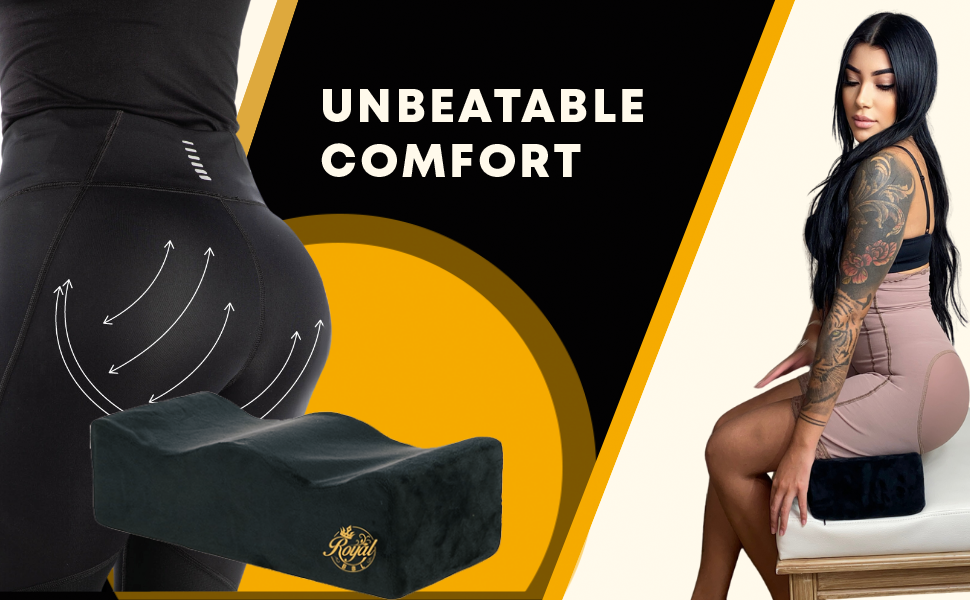
Ressources de récupération BBL
What's the Average Cost of a Brazilian Butt Lift (BBL)?
- #"bbl Pillows" Sale
- ##1 BBL Surgeon in Miami
- #affordable bbl surgery miami
- #Almohada BBL
- #almohada BBL Amazon
- #almohada BBL Arizona
- #almohada BBL Atlanta
- #almohada BBL Bombshell
- #almohada BBL Boston
- #almohada BBL Bronx
- #almohada BBL Brooklyn
- #almohada BBL California
- #almohada BBL cerca de mí
- #almohada BBL cerca de mí Atlanta
- #bbl booty pillow after surgery
- #bbl booty pillow bombshell booty pillow
- #bbl booty pillow near me
- #bbl booty pillow store near me
- #BBL Booty Pillow-BBL Supplies After Surgery kit
- #BBL Booty Pillow-BBL Supplies After Surgery kit-BBL
- #BBL Booty Pillow-BBL Supplies After Surgery kit-Brazilian butt lift
- #bbl booty pillows
- #bbl booty pillows near me
- #bbl butt pillow
- #bbl butt pillow Atlanta GA
- #bbl butt pillow Austin TX
- #bbl butt pillow bombshell booty pillow
- #bbl butt pillow store near me
- #BBL Costs by State
- #bbl cushion
- #bbl pillow bombshell booty pillow
- #bbl pillow store near me
- #bbl pillow store near me miami
- #bbl post surgery
- #BBL price
- #BBL procedures
- #BBL recovery Atlanta Georgia
- #BBL recovery Austin Texas
- #BBL recovery Illinois
- #BBL recovery Los Angeles California
- #BBL recovery Miami Florida
- #bbl recovery pillow
- #bbl recovery pillows
- #bbl surgery chicago
- #bbl surgery las vegas
- #bbl surgery miami
- #bbl surgery pillow
- #bbl surgery texas
- #bbl surgery tijuana
- #bombshell booty pillow
- #bombshell booty pillow bbl booty pillow
- #bombshell booty pillow bbl booty pillows
- #bombshell booty pillow bbl butt pillows
- #bombshell booty pillow bbl pillows
- #Brazilian Butt Lift (BBL)
- #brazilian butt lift booty pillow
- #brazilian buttock lift pillow
- #butt augmentation pillow
- #cojin bbl
- #cojin bbl post operatorio
- #gluteal augmentation
- #How Much Does a BBL Cost
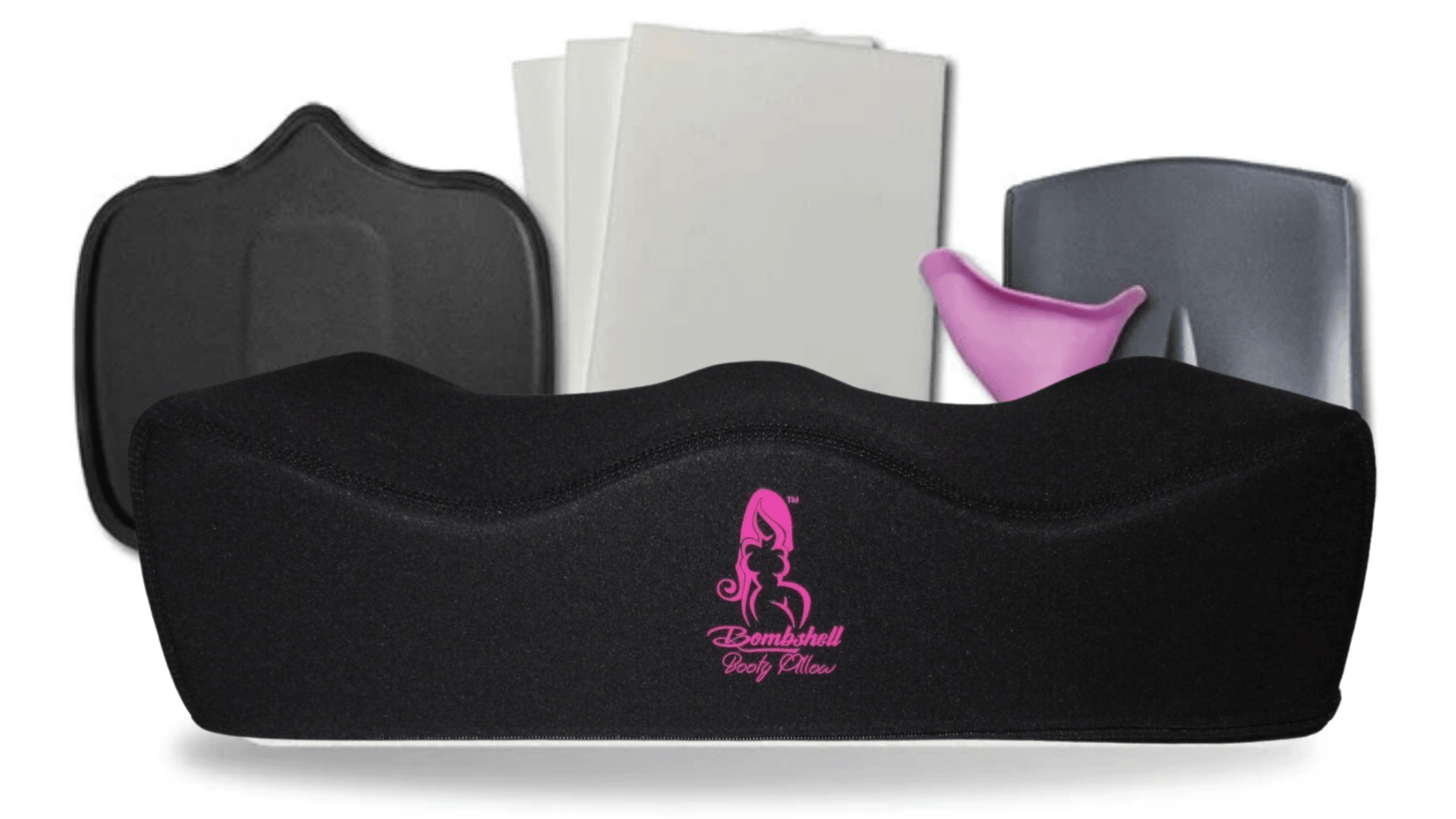
Ressources de récupération BBL
BBL Surgery Supply List: What You Actually Need
- #2025 BBL aftercare
- #2025 BBL aftercare Miami
- #2025 BBL aftercare near me
- #3 BBL Large LIPO Foams
- #3 pack lipo foam
- #3 pack lipo foam boards
- #360 lipo foam
- #360 lipo foam belt
- #360 lipo foam wrap
- #5 years after liposuction
- #5x faja
- #abdominal lipo foam
- #affordable BBL recovery supplies list
- #after bbl surgery must haves
- #After Surgery BBL Recovery Set
- #Aftercare for BBL Surgery: BBL aftercare
- #amazon butt pillow
- #and each followed by a comma: bbl post surgery kit
- #arnica tea benefits
- #bbl after 10 years
- #bbl after 20 years
- #bbl after 5 years
- #bbl aftercare list
- #bbl bed
- #bbl booty pillow
- #bbl booty pillow after surgery
- #bbl booty pillow near me
- #BBL Booty Pillow-BBL Supplies After Surgery kit
- #BBL Booty Pillow-BBL Supplies After Surgery kit-BBL
- #BBL Booty Pillow-BBL Supplies After Surgery kit-Brazilian butt lift
- #bbl booty pillows
- #bbl booty pillows near me
- #bbl butt pillow
- #bbl butt pillow after surgery post bbl
- #bbl butt pillow Atlanta GA
- #bbl butt pillow Austin TX
- #bbl butt pillow Beverly Hills CA
- #bbl butt pillow Charlotte NC
- #bbl care package
- #BBL checklist
- #bbl essentials kit
- #bbl essentials recovery kit
- #bbl exercise
- #bbl kit
- #bbl mattress
- #bbl packages
- #bbl pillow
- #BBL Pillow After Surgery
- #bbl pillow comfort and support
- #bbl pillow for car
- #bbl pillow kit
- #bbl pillow maximum comfort
- #bbl pillow near me
- #bbl pillows
- #bbl pillows near me
- #BBL Plus with Back Support Pillow
- #bbl post op
- #BBL Post op care
- #BBL Post OP Care Kit
- #Bbl Post Surgery Bundle
- #BBL Post Surgery Supplies
- #BBL Post-Op Care Bundle
- #BBL Post-Op Kit
- #BBL Post-Op Recovery Kit
- #bbl procedure
- #BBL Recovery KIT
- #BBL RECOVERY SUPPLIES KIT
- #BBL recovery supplies list
- #bbl reversal before and after
- #bbl shorts
- #bbl supplies
- #bbl support cushion
- #bbl surgery pillow
- #BBL surgery supply Kit
- #BBL Surgery Supply List
- #BBL Surgery Supply List: What You Actually Need
- #bbl unique design
- #benefits of arnica tea
- #benefits of drinking arnica tea
- #best bbl pillow
- #best bbl pillow for car
- #best bbl pillow for driving
- #best bbl pillow for sitting
- #Best Bbl Post Surgery Bundle
- #big booty pillow
- #big butt pillow
- #black bbl
- #body snatched
- #bombshell booty pillow
- #booty pillow
- #brazilian butt lift bed
- #brazilian butt lift kit
- #Brazilian Butt Lift Pillow
- #brazilian butt lift recovery
- #Brazilian Butt Lift surgery
- #Brazilian Butt Lift Surgery Recovery Kit
- #brazilian buttock lift pillow
- #bum shaped pillow
- #butt lift bbl
- #butt lift price
- #butt pilllow
- #butt pillow
- #butt pillow for plane
- #chin lipo recovery
- #chin liposuction recovery
- #colombian faja
- #colombian fajas
- #colombian shapewear
- #columbia faja
- #columbian faja
- #columbiana faja
- #Cosmetic Surgery Supplies
- #curvy faja
- #curvy fajas
- #curvy fajas usa
- #does bbl smell
- #does bbl smell go away
- #faja
- #faja body shaper
- #faja bodysuit
- #faja shaper
- #faja shapewear
- #faja to english
- #faja waist trainer
- #fajas
- #fajas shaper
- #fajas shapewear
- #female urinal device
- #female urination device
- #female urination devices
- #full body faja
- #get snatched
- #Go-To BBL Post-Op Recovery Kit
- #Here are the keywords extracted from your second list
- #how much are bbls
- #how much is a butt lift
- #how much is bbl
- #How to prepare for lipo 360 and BBL
- #how to use a female urinal
- #kylie jenner bbl
- #kylie jenner brazilian butt lift
- #kylie jenner butt
- #Lipo 360 Recovery Kit Bundles
- #Lipo Foam
- #lipo gone wrong
- #liposuction gone wrong
- #looking snatched meaning
- #lymphatic massage roller
- #meaning of snatched
- #mini bbl
- #ost surgery bbl support cushion
- #p bbl
- #panty faja
- #plus size body shaper
- #plus size girdle
- #plus size shape wear
- #plus size shaper
- #plus size shapewear
- #post surgery
- #Post Surgery Supplies Kit
- #shapewear for plus size women
- #shapewear plus size
- #shapewear store
- #shapewear with bra
- #shewee device
- #sitting after bbl myth
- #skims faja
- #sleeping without compression garment after lipo
- #snatch body
- #snatch body faja
- #snatch waist
- #snatch waist trainer
- #snatch wear
- #snatched body
- #snatched body faja
- #snatched body meaning
- #snatched bodysuit
- #snatched meaning
- #snatched meaning slang
- #snatched plastic surgery
- #snatched shapewear
- #snatched shapewear bodysuit
- #snatched waist meaning
- #stage 1 faja
- #stage 3 faja
- #sweat suit lose weight
- #tabla abdominal
- #Tummy Tuck & Lipo 360 Recovery Kit Bundles
- #tummy tuck faja
- #umay abdominal board
- #urinary devices female
- #waist snatched
- #waist snatchers
- #waist trainer faja
- #What do I need for my BBL surgery
- #what does snatched mean
- #what does snatched mean in slang
- #what does snatched mean slang
- #what is a snatched waist
- #what is bbl smell
- #with all other characters and numbers removed
- #womens pee device
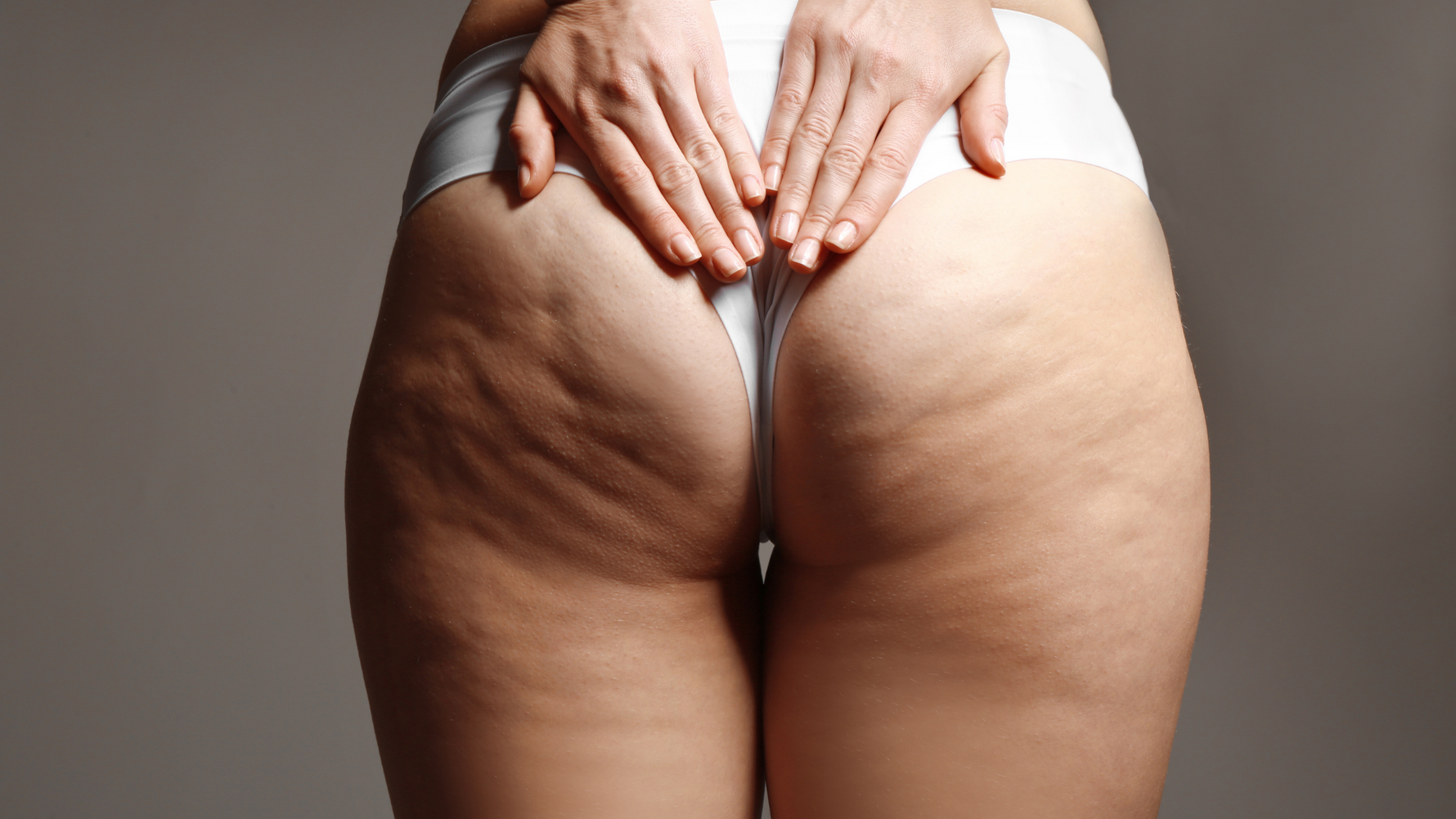
Ressources de récupération BBL
BBL Smell: Causes, Solutions & How to Prevent It
- #"bbl Pillows" Blowout Sale
- #2025 BBL recovery timeline
- #associated plastic surgeon
- #associated plastic surgeons
- #bbl booty pillow
- #bbl booty pillow after surgery
- #bbl booty pillow near me
- #BBL Booty Pillow-BBL Supplies After Surgery kit
- #BBL Booty Pillow-BBL Supplies After Surgery kit-Brazilian butt lift
- #bbl booty pillows
- #bbl booty pillows near me
- #bbl bum pillow
- #bbl bum pillows
- #bbl can smell
- #bbl can smell bad
- #bbl causes smell
- #bbl does it smell
- #BBL Hygiene
- #bbl plastic surgery
- #BBL Recovery Smell
- #bbl recovery time
- #bbl side effects smell
- #BBL Smell
- #bbl smell bad
- #bbl smell cardi b
- #bbl smell explained
- #bbl smell like
- #bbl smell meaning
- #bbl smell real
- #bbl smell reddit
- #bbl smell tiktok
- #bbl smell urban dictionary
- #bbl surgery smell
- #bbls smell
- #bbls smell bad
- #big booty pillow
- #big booty pillows
- #booty pillow
- #Brazilian Butt Lift Odor
- #brazilian butt lift pillow
- #brazilian butt lift recovery
- #brazilian buttock lift pillow
- #brazilian buttock lift pillows
- #bum pillow
- #bum pillows
- #Butt Lift Infection
- #butt wedge
- #cardi b bbl smell
- #does bbl smell
- #does bbl smell go away
- #does cardi b bbl smell
- #fupa support
- #how long does bbl smell last
- #pillow butt
- #pillow for booty
- #pillow for buttock
- #pillow for buttocks
- #pillows butt
- #pillows for booty
- #pillows for buttock
- #pillows for buttocks
- #Post-Surgery Smell
- #Preventing BBL Smell
- #Treating BBL Smell
- #what does bbl smell like
- #what does bbl smell mean
- #what is a bbl
- #what is bbl smell like poop
- #whats a bbl
- #whats a bbl smell
- #why do bbl smell bad
- #Why Does My BBL Smell

Ressources de récupération BBL
- #Affordable BBL pillow
- #amazon booty pillow
- #bbl booty pillow
- #bbl booty pillow after surgery
- #bbl booty pillow near me
- #BBL Booty Pillow-BBL Supplies After Surgery kit
- #BBL Booty Pillow-BBL Supplies After Surgery kit-BBL
- #bbl booty pillows
- #bbl booty pillows near me
- #BBL chair
- #BBL foam pillow
- #BBL pillow alternatives
- #BBL pillow Amazon
- #BBL pillow for car
- #BBL pillow for driving
- #BBL pillow for office chair
- #BBL pillow for sleeping
- #BBL pillow near me
- #BBL pillow with cup holder
- #BBL Recovery
- #BBL recovery pillow
- #BBL sitting pillow
- #BBL surgery pillow
- #BBL travel pillow
- #Best BBL pillow
- #Body Contouring
- #booty pillows
- #Brazilian Butt Lift
- #Brazilian butt lift pillow
- #Brazilian Buttock Lift pillow
- #Butt Lift
- #Buttock Augmentation
- #Cosmetic Surgery
- #Cost of BBL
- #Fat Transfer
- #How to sit after BBL
- #pillow for bbl
- #pillow for booty
- #pillows for bbl
- #Plastic Surgery
- #Post BBL pillow
- #Risks of BBL
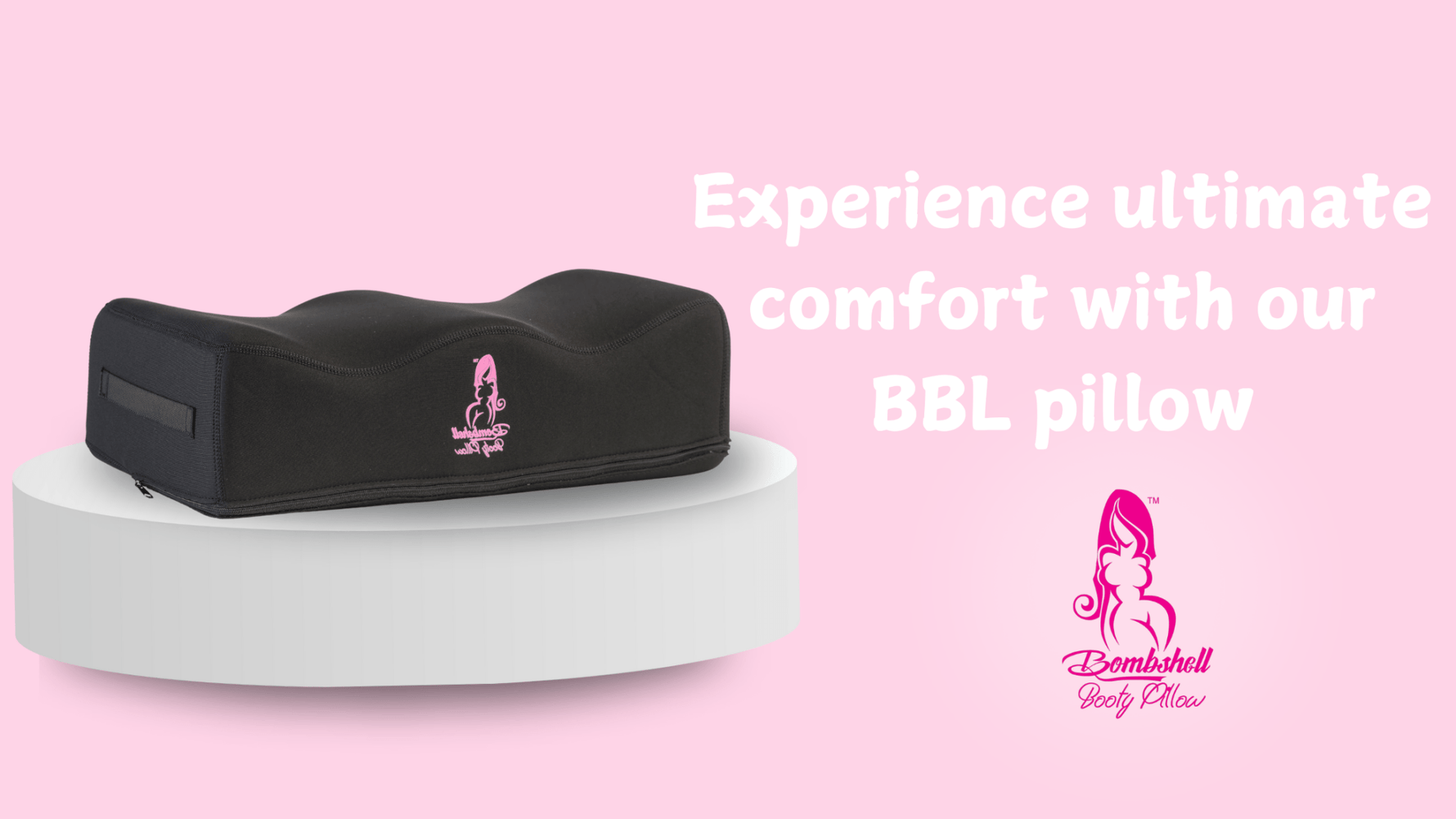
Ressources de récupération BBL
Oreiller Boppy ou oreiller BBL : lequel est le meilleur pour la récupération post-BBL ?
- #"bbl Pillows" Blowout Sale
- #"bbl Pillows" clearance Sale
- #"bbl Pillows" Sale
- #10 bbl pillow chair
- #10 bbl pillow driving
- #10 bbl pillow meaning
- #10 bbl pillow sitting
- #10 bbl pillow use
- #20 bbl pillow black
- #20 vertical bbl pillow
- #aossa bbl pillow
- #avocado bbl pillow
- #bbl back pillow
- #bbl bathroom pillow
- #bbl body pillow
- #bbl booty pillow after surgery
- #BBL BRAZILIAN BUTT LIFT PILLOW
- #bbl butt cushion Atlanta GA
- #bbl butt cushion Austin TX
- #bbl butt cushion Beverly Hills CA
- #bbl butt cushion Boca Raton FL
- #bbl butt cushion Charlotte NC
- #bbl butt cushion Chicago IL
- #bbl butt cushion Dallas TX
- #bbl butt cushion Fort Lauderdale FL
- #bbl butt cushion Houston TX
- #bbl butt cushion Jacksonville FL
- #bbl butt cushion Las Vegas NV
- #bbl butt cushion Los Angeles CA
- #bbl butt cushion Miami FL
- #bbl butt cushion Nashville TN
- #bbl butt cushion Orlando FL
- #bbl butt cushion Phoenix AZ
- #bbl butt cushion San Antonio TX
- #bbl butt cushion San Diego CA
- #bbl butt cushion San Francisco CA
- #bbl butt cushion Tampa FL
- #bbl butt cushion West Palm Beach FL
- #bbl butt pillow Atlanta GA
- #bbl butt pillow Austin TX
- #bbl butt pillow Beverly Hills CA
- #bbl butt pillow Boca Raton FL
- #bbl butt pillow Charlotte NC
- #bbl butt pillow Chicago IL
- #bbl butt pillow Dallas TX
- #bbl butt pillow Fort Lauderdale FL
- #bbl butt pillow Houston TX
- #bbl butt pillow Jacksonville FL
- #bbl butt pillow Las Vegas NV
- #bbl butt pillow Los Angeles CA
- #bbl butt pillow Miami FL
- #bbl butt pillow Nashville TN
- #bbl butt pillow Orlando FL
- #bbl butt pillow Phoenix AZ
- #bbl butt pillow San Antonio TX
- #bbl butt pillow San Diego CA
- #bbl butt pillow San Francisco CA
- #bbl butt pillow Tampa FL
- #bbl butt pillow West Palm Beach FL
- #bbl cushion pillow
- #bbl doughnut pillow
- #bbl drake pillow
- #bbl face down pillow
- #bbl pillow after surgery
- #bbl pillow airplane
- #bbl pillow aliexpress
- #bbl pillow alternative
- #bbl pillow amazon
- #bbl pillow and back support
- #bbl pillow australia
- #bbl pillow bag
- #bbl pillow bed
- #bbl pillow benefits
- #bbl pillow best
- #bbl pillow boppy
- #bbl pillow car
- #bbl pillow case
- #bbl pillow cheap
- #bbl pillow colombia
- #bbl pillow cover
- #bbl pillow diy
- #bbl pillow donut
- #bbl pillow dubai
- #bbl pillow for airplane
- #bbl pillow for bed
- #bbl pillow for car
- #bbl pillow for chair
- #bbl pillow for driving
- #bbl pillow for flying
- #bbl pillow for how long
- #bbl pillow for office chair
- #bbl pillow for sale
- #bbl pillow for sale near me
- #bbl pillow for sale near me Atlanta GA
- #bbl pillow for sale near me Austin TX
- #bbl pillow for sale near me Beverly Hills CA
- #bbl pillow for sale near me Boca Raton FL
- #bbl pillow for sale near me Charlotte NC
- #bbl pillow for sale near me Chicago IL
- #bbl pillow for sale near me Dallas TX
- #bbl pillow for sale near me Fort Lauderdale FL
- #bbl pillow for sale near me Houston TX
- #bbl pillow for sale near me Jacksonville FL
- #bbl pillow for sale near me Las Vegas NV
- #bbl pillow for sale near me Los Angeles CA
- #bbl pillow for sale near me Miami FL
- #bbl pillow for sale near me New York City NY
- #bbl pillow for sale near me Orlando FL
- #bbl pillow for sale near me San Antonio TX
- #bbl pillow for sale near me San Diego CA
- #bbl pillow for sale near me San Francisco CA
- #bbl pillow for sale near me Tampa FL
- #bbl pillow for sale near me West Palm Beach FL
- #bbl pillow for sitting
- #bbl pillow for sleeping
- #bbl pillow for sleeping on back
- #bbl pillow for toilet
- #bbl pillow for work
- #bbl pillow how long
- #bbl pillow how to sit
- #bbl pillow how to use
- #bbl pillow hurts
- #bbl pillow in store
- #bbl pillow istanbul
- #bbl pillow kenya
- #bbl pillow kuwait
- #bbl pillow miami
- #bbl pillow near me
- #bbl pillow nearby
- #bbl pillow on airplane
- #bbl pillow on plane
- #bbl pillow or boppy
- #bbl pillow para que sirve
- #bbl pillow post surgery
- #bbl pillow qatar
- #bbl pillow reddit
- #bbl pillow reviews
- #bbl pillow round
- #bbl pillow sale
- #bbl pillow seat
- #bbl pillow set
- #bbl pillow shein
- #bbl pillow size
- #bbl pillow sleep
- #bbl pillow store near me
- #bbl pillow store near me Atlanta GA
- #bbl pillow store near me Austin TX
- #bbl pillow store near me Beverly Hills CA
- #bbl pillow store near me Boca Raton FL
- #bbl pillow store near me Charlotte NC
- #bbl pillow store near me Chicago IL
- #bbl pillow store near me Dallas TX
- #bbl pillow store near me Fort Lauderdale FL
- #bbl pillow store near me Houston TX
- #bbl pillow store near me Jacksonville FL
- #bbl pillow store near me Las Vegas NV
- #bbl pillow store near me Los Angeles CA
- #bbl pillow store near me Miami FL
- #bbl pillow store near me New York City NY
- #bbl pillow store near me Orlando FL
- #bbl pillow store near me San Antonio TX
- #bbl pillow store near me San Diego CA
- #bbl pillow store near me San Francisco CA
- #bbl pillow store near me Tampa FL
- #bbl pillow store near me West Palm Beach FL
- #bbl pillow target
- #bbl pillow temu
- #bbl pillow to drive
- #bbl pillow to lay down
- #bbl pillow to sit
- #bbl pillow to sleep
- #bbl pillow to sleep on back
- #bbl pillow toilet
- #bbl pillow uk
- #bbl pillow uncomfortable
- #bbl pillow vs boppy pillow
- #bbl pillow walmart
- #bbl pillow wave
- #bbl pillow while driving
- #bbl pillow wholesale
- #bbl pillow with back support
- #bbl pillow with hole
- #bbl post op pillow
- #bbl recovery pillow
- #bbl soft pillow
- #bbl stomach pillow
- #bbl thigh pillow
- #bbl travel pillow
- #bbl triangle pillow
- #bbl tummy tuck pillow
- #bbl wedge pillow
- #best bbl donut pillow
- #best bbl pillow after surgery
- #best bbl pillow for airplane
- #best bbl pillow for driving
- #best bbl pillow for sitting
- #best bbl pillow reddit
- #best bbl recovery pillow
- #bombshell booty bbl pillow
- #Boppy pillow vs. BBL pillow
- #brazilian buttock lift pillow
- #cheap bbl pillow near me
- #cheap bbl pillow near me Atlanta GA
- #cheap bbl pillow near me Austin TX
- #cheap bbl pillow near me Beverly Hills CA
- #cheap bbl pillow near me Boca Raton FL
- #cheap bbl pillow near me Charlotte NC
- #cheap bbl pillow near me Chicago IL
- #cheap bbl pillow near me Dallas TX
- #cheap bbl pillow near me Fort Lauderdale FL
- #cheap bbl pillow near me Houston TX
- #cheap bbl pillow near me Jacksonville FL
- #cheap bbl pillow near me Las Vegas NV
- #cheap bbl pillow near me Los Angeles CA
- #cheap bbl pillow near me Miami FL
- #cheap bbl pillow near me New York City NY
- #cheap bbl pillow near me Orlando FL
- #cheap bbl pillow near me San Antonio TX
- #cheap bbl pillow near me San Diego CA
- #cheap bbl pillow near me San Francisco CA
- #cheap bbl pillow near me Tampa FL
- #cheap bbl pillow near me West Palm Beach FL
- #comfortable bbl pillow
- #contour bbl pillow
- #contourmd bbl booty pillow
- #contourmd bbl pillow
- #discreet bbl pillow
- #discrete bbl pillow
- #does bbl pillow work
- #hombys bbl pillow
- #how do you use a bbl pillow
- #how long do you have to use bbl pillow
- #how to use bbl pillow in car
- #how to use bbl pillow on plane
- #inflatable bbl pillow
- #is a bbl pillow necessary
- #lale bbl pillow
- #large bbl pillow
- #mini bbl pillow
- #my booty bbl pillow
- #pillow after bbl
- #sitting after bbl without pillow
- #sitting on bbl pillow after surgery
- #the bbl pillow
- #the official bbl pillow corp
- #thick bbl pillow
- #what does a bbl pillow look like
- #what is a bbl pillow
- #what is better?
- #xl bbl pillow
- #yesindeed bbl pillow
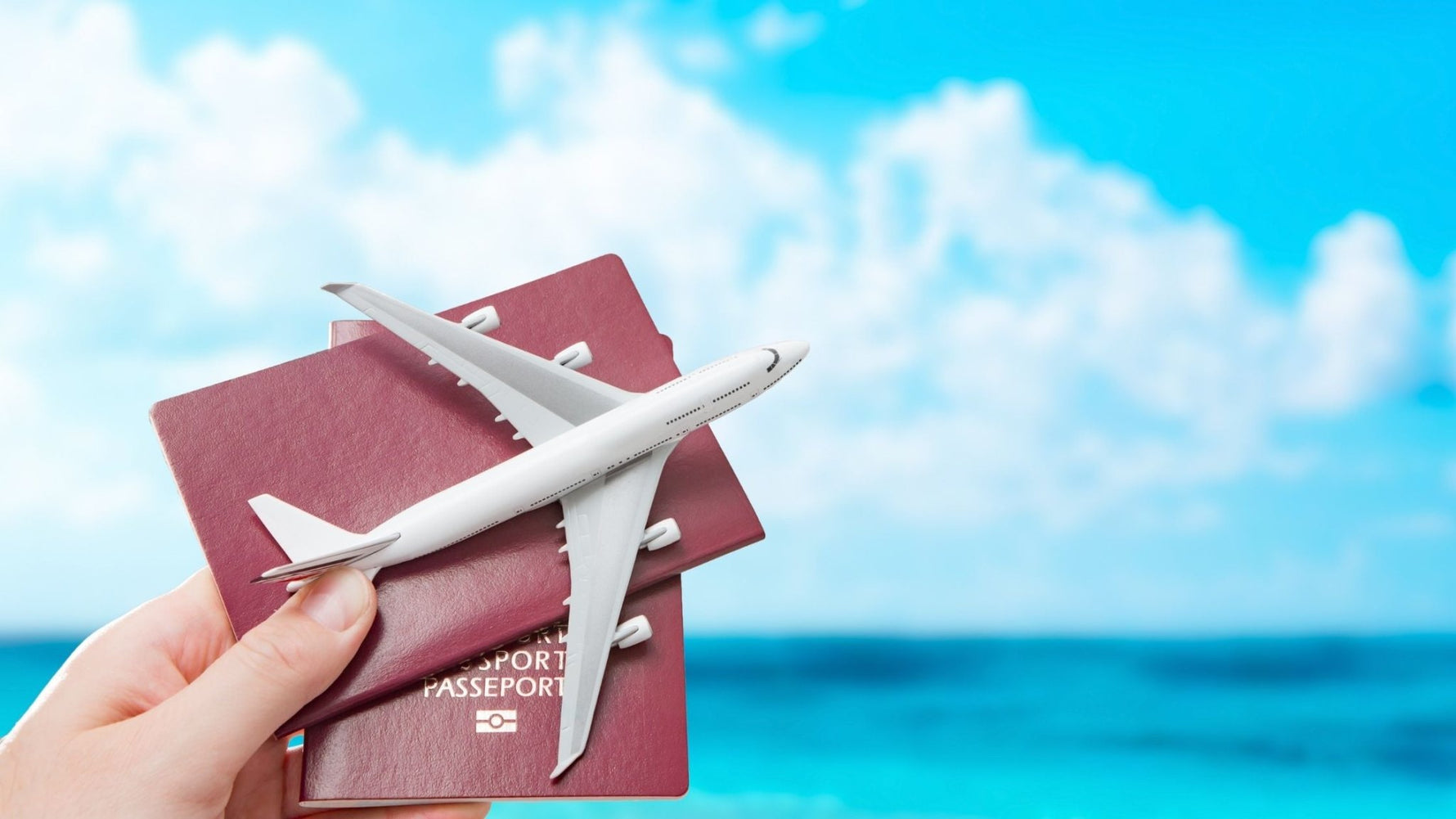
Ressources de récupération BBL
comment utiliser l'oreiller bbl dans l'avion
- #"bbl Pillows" Blowout Sale
- #"bbl Pillows" clearance Sale
- #"bbl Pillows" Sale
- #after bbl brazilian butt lift pillow
- #after BBL How do you sit with a BBL pillow?
- #after BBL Where can I buy a BBL pillow?
- #after surgery
- #after surgery How long does BBL recovery take?
- #after surgery How painful is BBL recovery?
- #after surgery When can I sleep on my back after a BBL?
- #alternatives
- #aossa bbl pillow
- #avocado bbl pillow
- #bag bbl pillow
- #bb body pillow
- #bbl back pillow
- #bbl bathroom pillow
- #bbl body pillow
- #bbl booty pillow after surgery
- #BBL BRAZILIAN BUTT LIFT PILLOW
- #BBL Brazilian Butt Lift Pillow Post Surgery
- #BBL Brazilian Butt Lift Pillow Post Surgery Brazilian Butt Lift
- #bbl brazilian buttock lift
- #bbl buttock pillow
- #bbl buttock pillows
- #BBL complications
- #BBL pillow
- #bbl pillow after surgery
- #bbl pillow airplane
- #bbl pillow aliexpress
- #bbl pillow alternative
- #bbl pillow amazon
- #bbl pillow and back support
- #BBL pillow Atlanta
- #BBL pillow Austin
- #bbl pillow australia
- #bbl pillow bed
- #BBL pillow Beverly Hills
- #BBL pillow Boca Raton
- #BBL pillow Chicago
- #BBL pillow Dallas
- #BBL pillow for driving
- #BBL pillow Fort Lauderdale
- #BBL pillow Houston
- #BBL pillow Jacksonville
- #BBL pillow Los Angeles
- #BBL pillow Miami
- #BBL pillow Naples
- #BBL pillow near me Atlanta GA
- #BBL pillow near me Charlotte NC
- #BBL pillow near me Chicago IL
- #BBL pillow near me Houston TX
- #BBL pillow near me Las Vegas NV
- #BBL pillow near me Los Angeles CA
- #BBL pillow near me Miami FL
- #BBL pillow near me Nashville TN
- #BBL pillow near me Orlando FL
- #BBL pillow near me Phoenix AZ
- #BBL pillow New York City
- #BBL pillow Newport Beach
- #BBL pillow Orlando
- #BBL pillow San Antonio
- #BBL pillow San Diego
- #BBL pillow San Francisco
- #BBL pillow Scottsdale
- #BBL pillow Tampa
- #BBL pillow West Palm Beach
- #bbl pillow with back support
- #BBL recovery
- #BBL recovery Atlanta
- #BBL recovery Austin
- #BBL recovery Beverly Hills
- #BBL recovery Boca Raton
- #BBL recovery centers in Atlanta GA
- #BBL recovery centers in Charlotte NC
- #BBL recovery centers in Chicago IL
- #BBL recovery centers in Houston TX
- #BBL recovery centers in Las Vegas NV
- #BBL recovery centers in Los Angeles CA
- #BBL recovery centers in Miami FL
- #BBL recovery centers in Nashville TN
- #BBL recovery centers in Orlando FL
- #BBL recovery centers in Phoenix AZ
- #BBL recovery Chicago
- #BBL recovery Dallas
- #BBL recovery Fort Lauderdale
- #BBL recovery Houston
- #BBL recovery Jacksonville
- #BBL recovery Los Angeles
- #BBL recovery Miami
- #BBL recovery Naples
- #BBL recovery New York City
- #BBL recovery Newport Beach
- #BBL recovery Orlando
- #BBL recovery San Antonio
- #BBL recovery San Diego
- #BBL recovery San Francisco
- #BBL recovery Scottsdale
- #BBL recovery Tampa
- #BBL recovery tips
- #BBL recovery West Palm Beach
- #BBL results
- #benefits
- #best bbl pillow after surgery
- #best bbl pillow benefits
- #best bbl pillow for airplane
- #best BBL pillow for driving
- #best bbl pillow for sitting
- #best brands
- #best way to sleep
- #big ass pillow
- #black bbl pillow
- #Bombshell Booty Pillow
- #Bombshell Booty Pillow BBL cushion
- #bombshell booty pillow bbl pillow
- #Bombshell Booty Pillow Can I use a regular pillow for BBL recovery?
- #Bombshell Booty Pillow What are the best BBL pillow brands?
- #boppy bbl pillow
- #Brazilian butt lift aftercare Atlanta
- #Brazilian butt lift aftercare Austin
- #Brazilian butt lift aftercare Beverly Hills
- #Brazilian butt lift aftercare Boca Raton
- #Brazilian butt lift aftercare Chicago
- #Brazilian butt lift aftercare Dallas
- #Brazilian butt lift aftercare Fort Lauderdale
- #Brazilian butt lift aftercare Houston
- #Brazilian butt lift aftercare Jacksonville
- #Brazilian butt lift aftercare Los Angeles
- #Brazilian butt lift aftercare Miami
- #Brazilian butt lift aftercare Naples
- #Brazilian butt lift aftercare New York City
- #Brazilian butt lift aftercare Newport Beach
- #Brazilian butt lift aftercare Orlando
- #Brazilian butt lift aftercare San Antonio
- #Brazilian butt lift aftercare San Diego
- #Brazilian butt lift aftercare San Francisco
- #Brazilian butt lift aftercare Scottsdale
- #Brazilian butt lift aftercare specialists in Atlanta GA
- #Brazilian butt lift aftercare specialists in Charlotte NC
- #Brazilian butt lift aftercare specialists in Chicago IL
- #Brazilian butt lift aftercare specialists in Houston TX
- #Brazilian butt lift aftercare specialists in Las Vegas NV
- #Brazilian butt lift aftercare specialists in Los Angeles CA
- #Brazilian butt lift aftercare specialists in Miami FL
- #Brazilian butt lift aftercare specialists in Nashville TN
- #Brazilian butt lift aftercare specialists in Orlando FL
- #Brazilian butt lift aftercare specialists in Phoenix AZ
- #Brazilian butt lift aftercare Tampa
- #Brazilian butt lift aftercare West Palm Beach
- #Brazilian butt lift pillow
- #butt cushion Atlanta GA
- #butt cushion Charlotte NC
- #butt cushion Chicago IL
- #butt cushion Houston TX
- #butt cushion Las Vegas NV
- #butt cushion Los Angeles CA
- #butt cushion Miami FL
- #butt cushion Nashville TN
- #butt cushion Orlando FL
- #butt cushion Phoenix AZ
- #butt pillow
- #butt pillow Atlanta GA
- #butt pillow Charlotte NC
- #butt pillow Chicago IL
- #butt pillow Houston TX
- #butt pillow Las Vegas NV
- #butt pillow Los Angeles CA
- #butt pillow Miami FL
- #butt pillow Nashville TN
- #butt pillow Orlando FL
- #butt pillow Phoenix AZ
- #butt pillows Atlanta GA
- #butt pillows Charlotte NC
- #butt pillows Chicago IL
- #butt pillows Houston TX
- #butt pillows Las Vegas NV
- #butt pillows Los Angeles CA
- #butt pillows Miami FL
- #butt pillows Nashville TN
- #butt pillows Orlando FL
- #butt pillows Phoenix AZ
- #buy
- #Can I drive with a BBL pillow?
- #can I sleep on my back 2 weeks after BBL
- #car
- #care instructions
- #cleaning
- #comfort
- #complications
- #contourmd bbl booty pillow
- #discomfort What makes the Bombshell Booty Pillow different?
- #driving
- #driving after BBL
- #durable What is the warranty on the Bombshell Booty Pillow?
- #fat transfer recovery How long to use a BBL pillow after surgery
- #features
- #guarantee
- #healing process What are the side effects of a BBL?
- #How do I clean my BBL pillow?
- #how long
- #How long do I need to use a BBL pillow after surgery?
- #how long to use
- #how often
- #How often should I take breaks from sitting with a BBL pillow?
- #how to clean a BBL pillow
- #how to sit
- #how to sit with a BBL pillow in a car
- #hygiene
- #hygiene When can I sit normally after a BBL?
- #instructions
- #instructions Can I drive with a BBL pillow?
- #Is the Bombshell Booty Pillow adjustable?
- #material
- #not recommended
- #not recommended How often should I take breaks from sitting with a BBL pillow?
- #not using
- #pain
- #patented
- #patented Is the Bombshell Booty Pillow adjustable?
- #pillow after bbl
- #pillow for bbl
- #pillows for bbl
- #post-BBL care
- #post-surgery pillow
- #proper use
- #purchase
- #purpose
- #quality
- #recommended
- #recovery
- #recovery pillow
- #recovery tips
- #recovery tips What happens if I don't use a BBL pillow?
- #recovery What is a BBL pillow used for?
- #regular pillow
- #results
- #results How do I clean my BBL pillow?
- #return policy BBL pillow
- #risks
- #side effects
- #sitting
- #sitting after BBL
- #sitting after surgery
- #sitting breaks
- #sitting on bbl pillow after surgery
- #sleeping on back
- #sleeping positions
- #sleeping positions When can I drive after a BBL?
- #substitutes
- #support pillow
- #support What is the Bombshell Booty Pillow made of?
- #timeline
- #travel
- #unique
- #use
- #warranty
- #What are the best sleeping positions after a BBL?
- #What happens if I don't use a BBL pillow?
- #what happens if you sit on your butt after a BBL
- #when can I drive
- #When can I drive after a BBL?
- #when can I drive What are the best sleeping positions after a BBL?
- #when can I sit
- #when can I sit normally after a BBL surgery
- #When can I sit normally after a BBL?
- #where to buy a BBL pillow
- #where to get
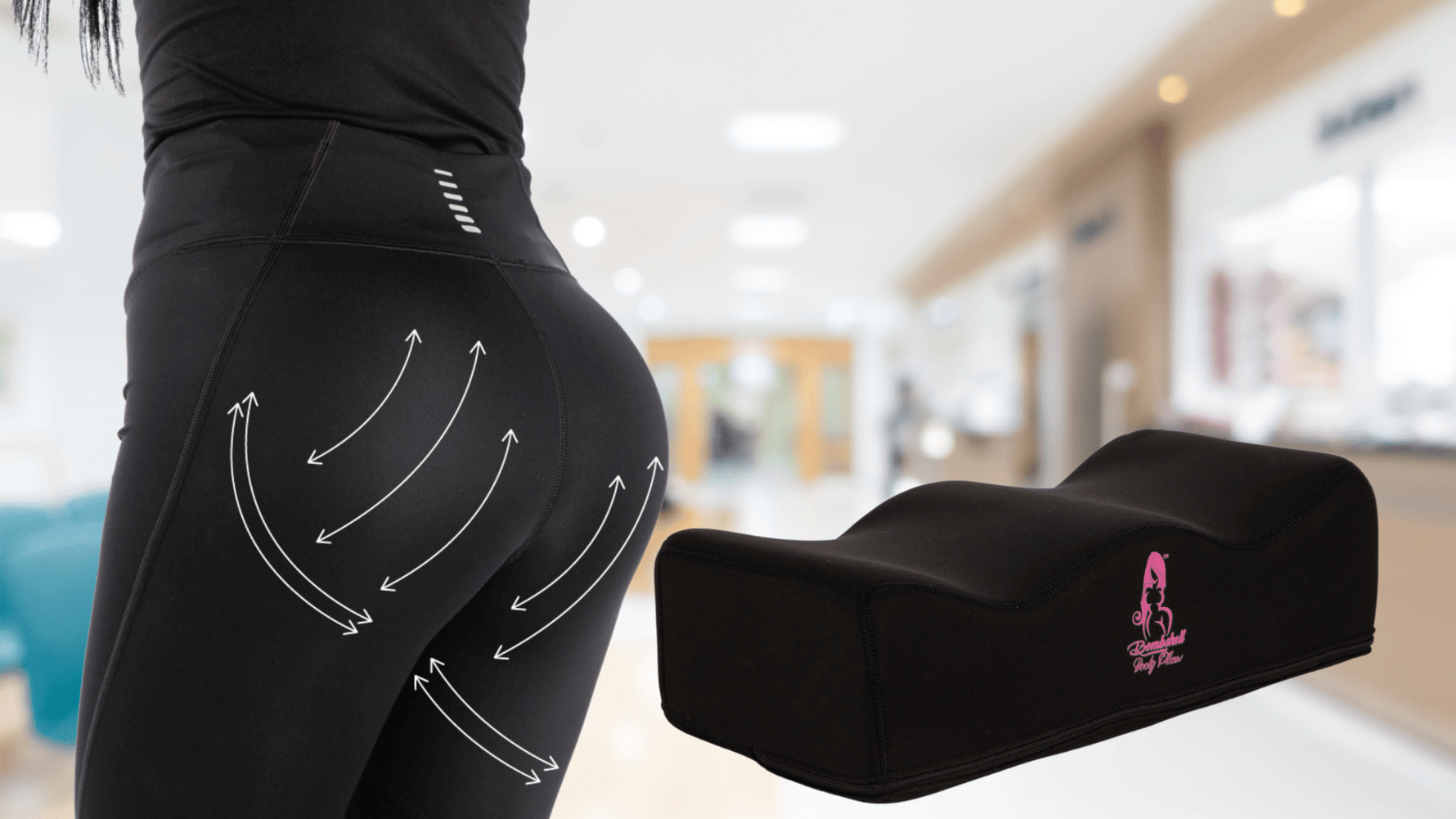
Ressources de récupération BBL
Quand pouvez-vous arrêter d'utiliser l'oreiller BBL
- #"bbl Pillows" Blowout Sale
- #"bbl Pillows" clearance Sale
- #"bbl Pillows" Sale
- ##1 BBL PILLOW
- ##1 BBL Surgeon in Miami
- ##1 best bbl pillow dr approved
- ##1 best bbl pillow patented dr approved
- ##1 doctor approved bbl pillow
- ##1 doctor patented approved bbl pillow
- #(e.g.
- #2025 BBL recovery guide
- #2025 BBL recovery instructions
- #2025 BBL recovery Miami
- #2025 BBL recovery near me
- #2025 BBL recovery sitting tips
- #2025 BBL recovery stages
- #2025 BBL recovery timeline
- #2025 BBL recovery tips
- #2025 BBL recovery tips for exercise
- #2025 BBL recovery tips for work
- #2025 BBL results
- #2025 BBL seroma
- #2025 BBL sitting pillow
- #2025 BBL surgeon Miami
- #2025 BBL swelling
- #2025 BBL travel
- #2025 Brazilian butt lift aftercare
- #2025 Brazilian butt lift recovery
- #2025 GUIDE TO A BRAZILIAN BUTT LIFT
- #A Brazilian Butt Lift for men
- #a butt pillow
- #affordable bbl surgery pillow
- #after bbl brazilian butt lift care
- #after bbl brazilian butt lift pillow
- #After BBL Surgery
- #after bbl surgery must haves
- #after brazilian butt lift surgery
- #Aftercare for BBL Surgery
- #Aftercare for BBL Surgery: BBL aftercare
- #amazon bbl pillows
- #amazon butt pillow
- #are bbl kits worth it
- #atlanta BBL surgery
- #ATLANTA cosmetic surgeon for brazilian butt lift
- #BABY BRAZILIAN BUTT LIFT BBL
- #BBL (Brazilian Butt Lift) For Men
- #BBL Before And After | Brazilian Butt Lift Miami
- #bbl booty pillow after surgery
- #bbl booty pillow near me
- #BBL Booty Pillow-BBL Supplies After Surgery kit
- #BBL Booty Pillow-BBL Supplies After Surgery kit-BBL
- #BBL Booty Pillow-BBL Supplies After Surgery kit-Brazilian butt lift
- #bbl booty pillows
- #bbl booty pillows near me
- #bbl brazilian
- #bbl brazilian buttock lift
- #bbl butt pillow
- #bbl butt pillow near me
- #bbl butt pillows
- #bbl butt pillows near me
- #bbl kit
- #bbl kits
- #bbl pillow
- #bbl pillow for sleeping
- #bbl pillow kit
- #bbl pillows
- #bbl pillows kit
- #bbl surgery kit
- #bbl surgery pillow
- #bbl surgery pillows
- #bbls pillow kit
- #booty pillow
- #booty pillows
- #botched brazilian butt lift
- #brazilian butt lift
- #brazilian butt lift bbl
- #brazilian butt lift before and after
- #brazilian butt lift chair
- #brazilian butt lift cost
- #brazilian butt lift cost near me
- #brazilian butt lift cream
- #brazilian butt lift death
- #brazilian butt lift death rate
- #brazilian butt lift gone wrong
- #brazilian butt lift kosten
- #brazilian butt lift meaning
- #brazilian butt lift men
- #brazilian butt lift mortality rate
- #brazilian butt lift near me
- #brazilian butt lift non surgical
- #brazilian butt lift pillow
- #brazilian butt lift pillow atlanta ga
- #brazilian butt lift pillow austin tx
- #brazilian butt lift pillow baltimore md
- #brazilian butt lift pillow charlotte nc
- #brazilian butt lift pillow chicago il
- #brazilian butt lift pillow dallas tx
- #brazilian butt lift pillow houston tx
- #brazilian butt lift pillow jacksonville fl
- #brazilian butt lift pillow las vegas nv
- #brazilian butt lift pillow los angeles ca
- #brazilian butt lift pillow miami fl
- #brazilian butt lift pillow new orleans la
- #brazilian butt lift pillow new york ny
- #brazilian butt lift pillow orlando fl
- #brazilian butt lift pillow philadelphia pa
- #brazilian butt lift pillow phoenix az
- #brazilian butt lift pillow san antonio tx
- #brazilian butt lift pillow san diego ca
- #brazilian butt lift pillow tampa fl
- #brazilian butt lift pillow washington dc
- #brazilian butt lift pillows
- #brazilian butt lift price
- #brazilian butt lift procedure
- #brazilian butt lift que es
- #brazilian butt lift recovery
- #brazilian butt lift results
- #brazilian butt lift risks
- #brazilian butt lift smell
- #brazilian butt lift surgery
- #brazilian butt lift uk
- #brazilian butt lift what is it
- #brazilian buttock lift pillow
- #brazilian buttock lift pillows atlanta ga
- #brazilian buttock lift pillows austin tx
- #brazilian buttock lift pillows baltimore md
- #brazilian buttock lift pillows charlotte nc
- #brazilian buttock lift pillows chicago il
- #brazilian buttock lift pillows dallas tx
- #brazilian buttock lift pillows houston tx
- #brazilian buttock lift pillows jacksonville fl
- #brazilian buttock lift pillows las vegas nv
- #brazilian buttock lift pillows los angeles ca
- #brazilian buttock lift pillows miami fl
- #brazilian buttock lift pillows new orleans la
- #brazilian buttock lift pillows new york ny
- #brazilian buttock lift pillows orlando fl
- #brazilian buttock lift pillows philadelphia pa
- #brazilian buttock lift pillows phoenix az
- #brazilian buttock lift pillows san antonio tx
- #brazilian buttock lift pillows san diego ca
- #brazilian buttock lift pillows tampa fl
- #brazilian buttock lift pillows washington dc
- #brazilian buttock pillow
- #brazilian buttock pillows
- #butt pillow
- #butt pillows
- #Can I wash my BBL pillow cover?
- #compression garments
- #foam pads) Where can I find more information about BBL after care?
- #How do I store my BBL pillow when not in use?
- #how much does a brazilian butt lift cost
- #how much is a brazilian butt lift
- #How often should I clean my BBL pillow?
- #Is a booty pillow the same as a BBL pillow? What is a butt pillow used for? Are butt pillows good for after surgery? Can I use a butt pillow for driving?
- #Is it safe to sit on a BBL pillow for two 2.5 hour flights
- #natural brazilian butt lift
- #non invasive brazilian butt lift
- #non surgical brazilian butt lift
- #pillow for bbl
- #pillows for bbl
- #skinny brazilian butt lift
- #What are some tips for maintaining the quality of my BBL pillow?
- #what is a brazilian butt lift
- #what is brazilian butt lift
- #What is the proper after care for my BBL pillow?
- #What other after care products do I need after a BBL?
- #what's a brazilian butt lift
- #when can you stop using bbl pillow
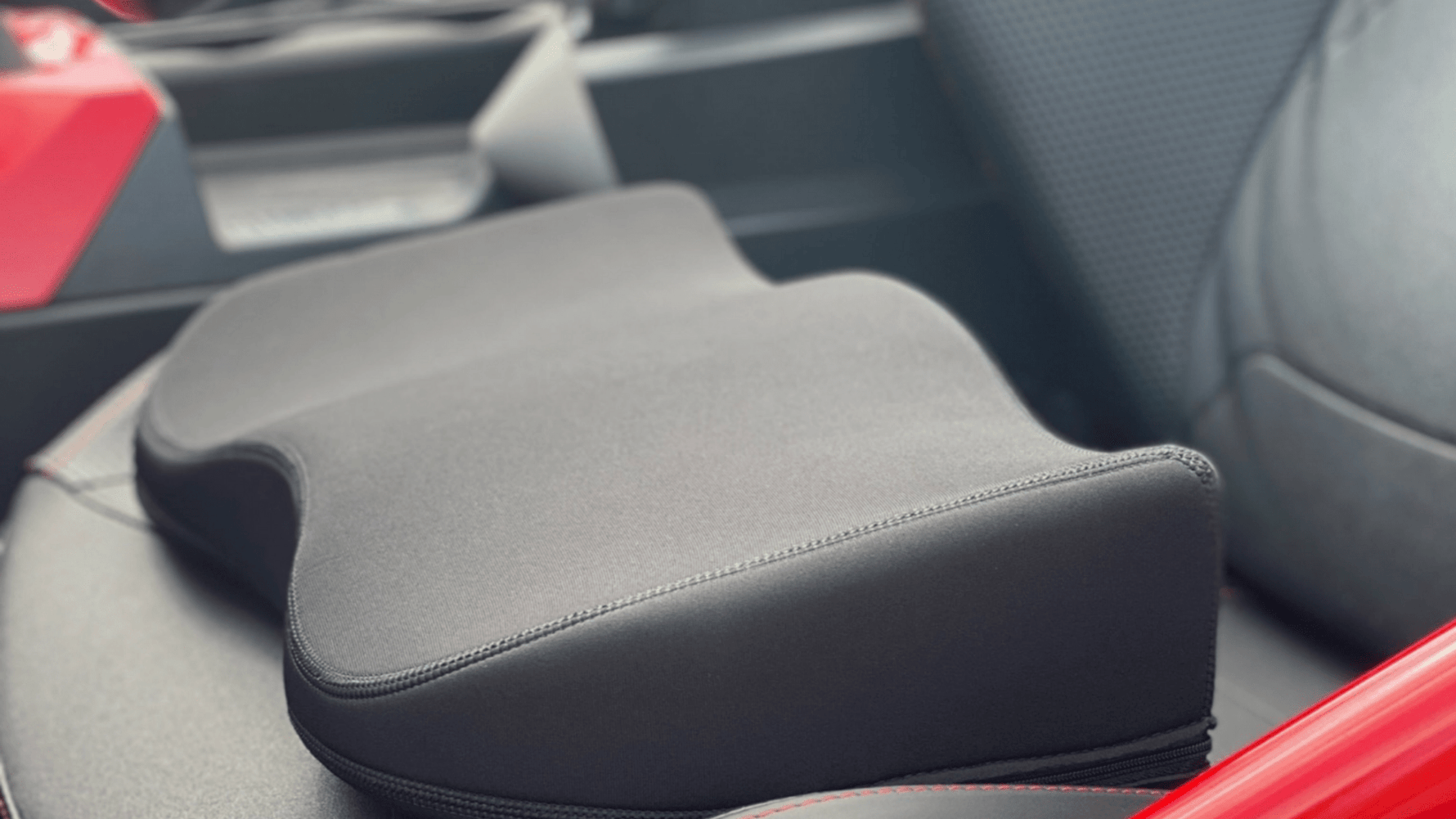
Ressources de récupération BBL
Combien de temps pouvez-vous rester assis sur votre oreiller bbl
- #"bbl Pillows" Blowout Sale
- #"bbl Pillows" clearance Sale
- #"bbl Pillows" Sale
- ##1 BBL PILLOW
- #2025 best bbl cushion for sitting
- #2025 best bbl driving pillow
- #2025 best bbl pillow
- #2025 best bbl pillow bombshell booty pillow
- #2025 best bbl pillow for driving
- #2025 best bbl pillow for plane
- #2025 best bbl pillow for travel
- #2025 best bbl pillow for work
- #2025 best bbl pillow my booty pillow
- #2025 best bbl pillows
- #2025 best bbl post surgery supplies
- #2025 best bbl post up supplies list
- #2025 Best BBL surgeon Miami
- #2025 best bbl surgeons miami
- #2025 What is the best BBL pillow for travel?
- #affordable bbl surgery pillow
- #after bbl brazilian butt lift pillow
- #amazon bbl pillow
- #amazon bbl pillow for car
- #amazon bbl pillows
- #bbl bobby pillow
- #bbl booty pillow
- #bbl booty pillow after surgery
- #bbl booty pillow near me
- #BBL Booty Pillow-BBL Supplies After Surgery kit
- #BBL Booty Pillow-BBL Supplies After Surgery kit-BBL
- #BBL Booty Pillow-BBL Supplies After Surgery kit-Brazilian butt lift
- #bbl booty pillows
- #bbl booty pillows near me
- #BBL BRAZILIAN BUTT LIFT PILLOW
- #BBL Brazilian Butt Lift Pillow Post Surgery
- #BBL Brazilian Butt Lift Pillow Post Surgery Brazilian Butt Lift
- #BBL butt augmentation pillow
- #bbl butt pillow
- #bbl butt pillow near me
- #bbl butt pillows
- #bbl butt pillows near me
- #bbl car pillow after surgery
- #bbl driving comfort
- #bbl driving instructions
- #bbl driving pillow
- #bbl driving pillow after surgery
- #bbl driving pillow benefits
- #bbl driving pillow brand
- #bbl driving pillow comparison
- #bbl driving pillow design
- #bbl driving pillow discount
- #bbl driving pillow dropshipping
- #bbl driving pillow exclusive
- #bbl driving pillow faq
- #bbl driving pillow features
- #bbl driving pillow guide
- #bbl driving pillow manufacturer
- #bbl driving pillow near me
- #bbl driving pillow near me atlanta ga
- #bbl driving pillow near me austin tx
- #bbl driving pillow near me baltimore md
- #bbl driving pillow near me charlotte nc
- #bbl driving pillow near me chicago il
- #bbl driving pillow near me dallas tx
- #bbl driving pillow near me houston tx
- #bbl driving pillow near me jacksonville fl
- #bbl driving pillow near me las vegas nv
- #bbl driving pillow near me los angeles ca
- #bbl driving pillow near me miami fl
- #bbl driving pillow near me new orleans la
- #bbl driving pillow near me new york ny
- #bbl driving pillow near me orlando fl
- #bbl driving pillow near me philadelphia pa
- #bbl driving pillow near me phoenix az
- #bbl driving pillow near me san antonio tx
- #bbl driving pillow near me san diego ca
- #bbl driving pillow near me tampa fl
- #bbl driving pillow near me washington dc
- #bbl driving pillow patent
- #bbl driving pillow reviews
- #bbl driving pillow sale
- #bbl driving pillow supplier
- #bbl driving pillow wholesale
- #bbl driving recovery
- #bbl driving restrictions
- #bbl driving safety
- #bbl driving support
- #bbl driving tips
- #bbl firm recovery pillow
- #bbl pillow after surgery
- #bbl pillow airplane
- #bbl pillow car
- #bbl pillow driving
- #bbl pillow for airplane travel after bbl
- #bbl pillow for car
- #bbl pillow for car rides
- #bbl pillow for car rides after bbl
- #bbl pillow for driving
- #bbl pillow for driving after surgery
- #bbl pillow for driving amazon
- #bbl pillow for driving atlanta ga
- #bbl pillow for driving austin tx
- #bbl pillow for driving baltimore md
- #bbl pillow for driving charlotte nc
- #bbl pillow for driving chicago il
- #bbl pillow for driving dallas tx
- #bbl pillow for driving houston tx
- #bbl pillow for driving jacksonville fl
- #bbl pillow for driving las vegas nv
- #bbl pillow for driving los angeles ca
- #bbl pillow for driving miami fl
- #bbl pillow for driving new orleans la
- #bbl pillow for driving new york ny
- #bbl pillow for driving orlando fl
- #bbl pillow for driving philadelphia pa
- #bbl pillow for driving phoenix az
- #bbl pillow for driving san antonio tx
- #bbl pillow for driving san diego ca
- #bbl pillow for driving tampa fl
- #bbl pillow for driving walmart
- #bbl pillow for driving washington dc
- #bbl pillow for long drives
- #bbl pillow for long road trips
- #bbl pillow for sale
- #bbl pillow for sale atlanta ga
- #bbl pillow for sale austin tx
- #bbl pillow for sale baltimore md
- #bbl pillow for sale charlotte nc
- #bbl pillow for sale chicago il
- #bbl pillow for sale dallas tx
- #bbl pillow for sale houston tx
- #bbl pillow for sale jacksonville fl
- #bbl pillow for sale las vegas nv
- #bbl pillow for sale los angeles ca
- #bbl pillow for sale miami fl
- #bbl pillow for sale new orleans la
- #bbl pillow for sale new york ny
- #bbl pillow for sale orlando fl
- #bbl pillow for sale philadelphia pa
- #bbl pillow for sale phoenix az
- #bbl pillow for sale san antonio tx
- #bbl pillow for sale san diego ca
- #bbl pillow for sale tampa fl
- #bbl pillow for sale washington dc
- #bbl pillow for travel
- #bbl pillow nearby atlanta ga
- #bbl pillow nearby austin tx
- #bbl pillow nearby baltimore md
- #bbl pillow nearby charlotte nc
- #bbl pillow nearby chicago il
- #bbl pillow nearby dallas tx
- #bbl pillow nearby houston tx
- #bbl pillow nearby jacksonville fl
- #bbl pillow nearby las vegas nv
- #bbl pillow nearby los angeles ca
- #bbl pillow nearby miami fl
- #bbl pillow nearby new orleans la
- #bbl pillow nearby new york ny
- #bbl pillow nearby orlando fl
- #bbl pillow nearby philadelphia pa
- #bbl pillow nearby phoenix az
- #bbl pillow nearby san antonio tx
- #bbl pillow nearby san diego ca
- #bbl pillow nearby tampa fl
- #bbl pillow nearby washington dc
- #bbl pillow plane
- #bbl pillow xtra large
- #bbl pillows after surgery
- #bbl recovery pillow
- #bbl recovery pillows
- #bbl surgery pillow
- #bbl travel pillow
- #best bbl pillow for driving
- #best bbl pillow for driving long distances
- #best bbl pillow for sleeping
- #bombshell bbl pillow
- #bombshell booty driving pillow
- #bombshell booty pillow
- #bombshell driving pillow
- #Brazilian butt lift pillow
- #brazilian buttock lift pillow
- #brazilian buttock lift pillows
- #buy bbl driving pillow atlanta ga
- #buy bbl driving pillow austin tx
- #buy bbl driving pillow baltimore md
- #buy bbl driving pillow charlotte nc
- #buy bbl driving pillow chicago il
- #buy bbl driving pillow dallas tx
- #buy bbl driving pillow houston tx
- #buy bbl driving pillow jacksonville fl
- #buy bbl driving pillow las vegas nv
- #buy bbl driving pillow los angeles ca
- #buy bbl driving pillow miami fl
- #buy bbl driving pillow new orleans la
- #buy bbl driving pillow new york ny
- #buy bbl driving pillow orlando fl
- #buy bbl driving pillow philadelphia pa
- #buy bbl driving pillow phoenix az
- #buy bbl driving pillow san antonio tx
- #buy bbl driving pillow san diego ca
- #buy bbl driving pillow tampa fl
- #buy bbl driving pillow washington dc
- #can i drive a car after bbl surgery
- #can i drive after bbl
- #can i use a bbl pillow on a plane
- #can i use a regular pillow for driving after bbl
- #comfortable bbl pillow for driving
- #do bbl pillows work
- #driving after bbl
- #driving after bbl recovery
- #driving after bbl surgery
- #driving after bbl tips
- #exclusive bbl driving pillow
- #firm bbl pillow
- #firm bbl pillows
- #how do i drive after bbl
- #how long after bbl can i drive
- #how much does a bbl driving pillow cost
- #how to drive after bbl
- #how to drive comfortably after bbl
- #how to make driving comfortable after bbl
- #how to sit in a car after bbl surgery
- #how to use a bbl pillow in a car
- #how to use bbl pillow while driving
- #is it safe to drive after bbl
- #is the bombshell booty pillow good for driving
- #patented bbl driving pillow
- #pillow bbl
- #pillow for bbl
- #post bbl car rides
- #post bbl driving
- #soft bbl pillow
- #walmart bbl pillow
- #what are the best tips for driving after bbl
- #what are the restrictions on driving after bbl
- #what kind of pillow do i need for driving after bbl
- #what to do when driving after bbl
- #when can i drive after bbl
- #where can i buy a bbl driving pillow
- #where to buy bbl driving pillow
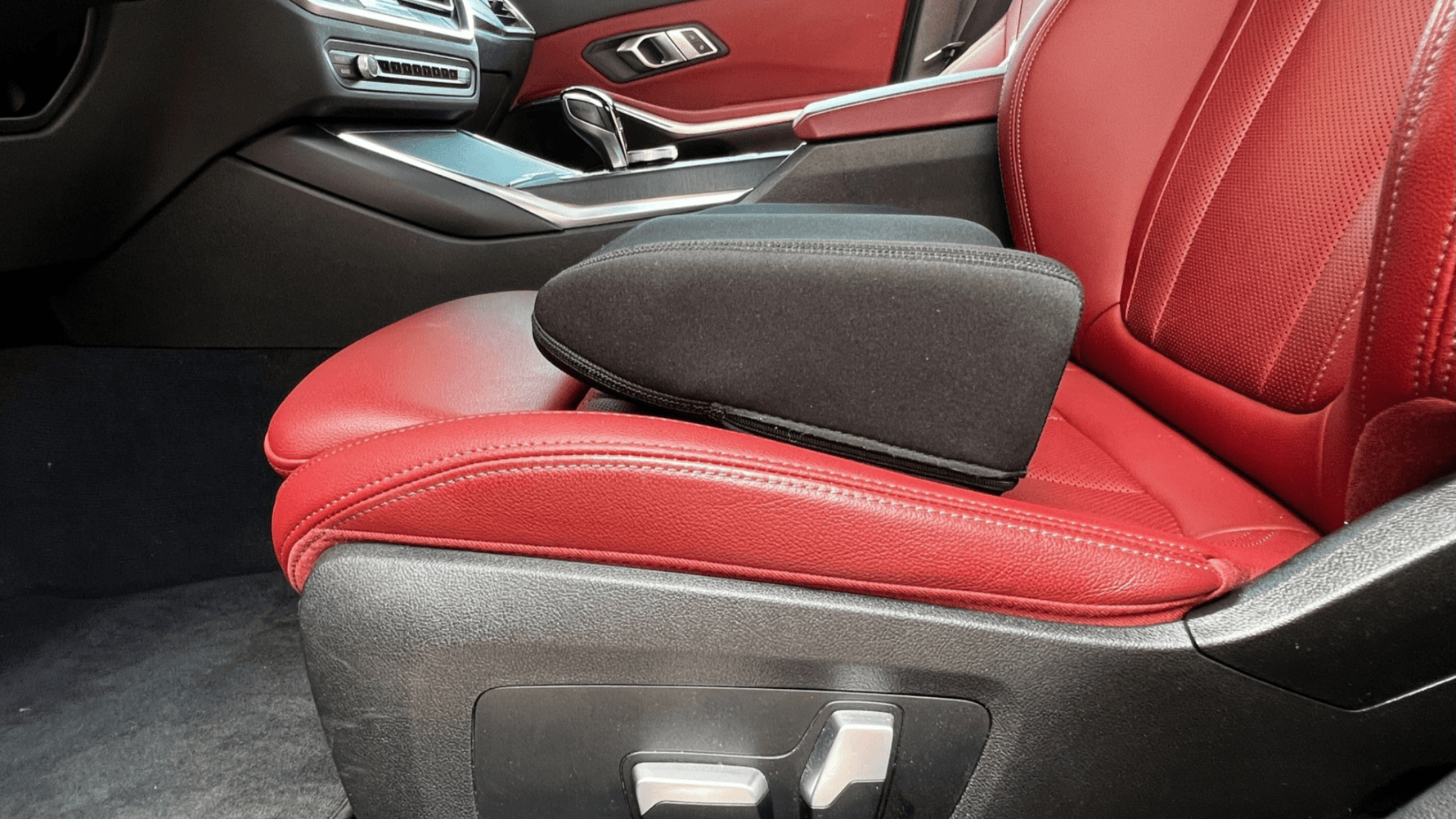
Ressources de récupération BBL
Peux-tu conduire avec un oreiller BBL
- #aossa bbl pillow
- #avocado bbl pillow
- #bbl aftercare
- #bbl back pillow
- #bbl bathroom pillow
- #bbl body pillow
- #bbl booty pillow after surgery
- #bbl car pillow after surgery
- #bbl cushion pillow
- #bbl doughnut pillow
- #bbl drake pillow
- #bbl driving comfort
- #bbl driving instructions
- #bbl driving pillow
- #bbl driving pillow after surgery
- #bbl driving pillow benefits
- #bbl driving pillow brand
- #bbl driving pillow comparison
- #bbl driving pillow design
- #bbl driving pillow discount
- #bbl driving pillow dropshipping
- #bbl driving pillow exclusive
- #bbl driving pillow faq
- #bbl driving pillow features
- #bbl driving pillow guide
- #bbl driving pillow manufacturer
- #bbl driving pillow near me
- #bbl driving pillow patent
- #bbl driving pillow reviews
- #bbl driving pillow sale
- #bbl driving pillow supplier
- #bbl driving pillow wholesale
- #bbl driving recovery
- #bbl driving restrictions
- #bbl driving safety
- #bbl driving support
- #bbl driving tips
- #bbl face down pillow
- #bbl pillow
- #bbl pillow after surgery
- #bbl pillow airplane
- #bbl pillow aliexpress
- #bbl pillow alternative
- #bbl pillow amazon
- #bbl pillow and back support
- #bbl pillow australia
- #bbl pillow bag
- #bbl pillow bed
- #bbl pillow benefits
- #bbl pillow best
- #bbl pillow black
- #bbl pillow boppy
- #bbl pillow car
- #bbl pillow case
- #bbl pillow chair
- #bbl pillow cheap
- #bbl pillow colombia
- #bbl pillow cover
- #bbl pillow diy
- #bbl pillow donut
- #bbl pillow driving
- #bbl pillow dubai
- #bbl pillow for airplane
- #bbl pillow for airplane travel after bbl
- #bbl pillow for bed
- #bbl pillow for car
- #bbl pillow for car rides
- #bbl pillow for car rides after bbl
- #bbl pillow for chair
- #bbl pillow for driving
- #bbl pillow for driving after surgery
- #bbl pillow for driving amazon
- #bbl pillow for driving walmart
- #bbl pillow for flying
- #bbl pillow for how long
- #bbl pillow for long drives
- #bbl pillow for long road trips
- #bbl pillow for office chair
- #bbl pillow for sale
- #bbl pillow for sale near me
- #bbl pillow for sitting
- #bbl pillow for sleeping
- #bbl pillow for sleeping on back
- #bbl pillow for toilet
- #bbl pillow for travel
- #bbl pillow for work
- #bbl pillow how long
- #bbl pillow how to use
- #bbl pillow hurts
- #bbl pillow in store
- #bbl pillow istanbul
- #bbl pillow kenya
- #bbl pillow kuwait
- #bbl pillow meaning
- #bbl pillow miami
- #bbl pillow near me
- #bbl pillow nearby
- #bbl pillow on airplane
- #bbl pillow on plane
- #bbl pillow or boppy
- #bbl pillow para que sirve
- #bbl pillow plane
- #bbl pillow post surgery
- #bbl pillow qatar
- #bbl pillow reddit
- #bbl pillow reviews
- #bbl pillow round
- #bbl pillow sale
- #bbl pillow seat
- #bbl pillow set
- #bbl pillow shein
- #bbl pillow sitting
- #bbl pillow size
- #bbl pillow sleep
- #bbl pillow store near me
- #bbl pillow target
- #bbl pillow temu
- #bbl pillow to drive
- #bbl pillow to lay down
- #bbl pillow to sit
- #bbl pillow to sleep
- #bbl pillow to sleep on back
- #bbl pillow toilet
- #bbl pillow uk
- #bbl pillow uncomfortable
- #bbl pillow use
- #bbl pillow vs boppy pillow
- #bbl pillow walmart
- #bbl pillow wave
- #bbl pillow while driving
- #bbl pillow wholesale
- #bbl pillow with back support
- #bbl pillow with hole
- #bbl post op pillow
- #bbl recovery
- #bbl recovery pillow
- #bbl soft pillow
- #bbl stomach pillow
- #bbl thigh pillow
- #bbl travel pillow
- #bbl triangle pillow
- #bbl tummy tuck pillow
- #bbl wedge pillow
- #best bbl donut pillow
- #best bbl pillow after surgery
- #best bbl pillow for airplane
- #best bbl pillow for driving
- #best bbl pillow for driving long distances
- #best bbl pillow for sitting
- #best bbl pillow reddit
- #best bbl recovery pillow
- #body contouring recovery
- #bombshell bbl pillow
- #bombshell booty driving pillow
- #bombshell booty pillow
- #bombshell booty pillow bbl driving pillow
- #bombshell driving pillow
- #booty pillow
- #brazilian butt lift
- #butt pillow
- #can i drive a car after bbl surgery
- #can i drive after bbl
- #can i use a bbl pillow on a plane
- #can i use a regular pillow for driving after bbl
- #car accessories
- #cheap bbl pillow near me
- #comfortable bbl pillow
- #comfortable bbl pillow for driving
- #contour bbl pillow
- #contourmd bbl booty pillow
- #contourmd bbl pillow
- #cosmetic surgery recovery
- #discreet bbl pillow
- #discrete bbl pillow
- #does bbl pillow work
- #driving after bbl
- #driving after bbl recovery
- #driving after bbl surgery
- #driving after bbl tips
- #driving comfort
- #driving support
- #exclusive bbl driving pillow
- #fat transfer recovery
- #hombys bbl pillow
- #how do i drive after bbl
- #how do you use a bbl pillow
- #how long after bbl can i drive
- #how long do you have to use bbl pillow
- #how much does a bbl driving pillow cost
- #how to drive after bbl
- #how to drive comfortably after bbl
- #how to make driving comfortable after bbl
- #how to sit in a car after bbl surgery
- #how to use a bbl pillow in a car
- #how to use bbl pillow in car
- #how to use bbl pillow on plane
- #how to use bbl pillow while driving
- #inflatable bbl pillow
- #is a bbl pillow necessary
- #is it safe to drive after bbl
- #is the bombshell booty pillow good for driving
- #lale bbl pillow
- #large bbl pillow
- #licious bbl pillow
- #mini bbl pillow
- #my booty pillow bbl driving pillow
- #orthopedic pillow
- #patented bbl driving pillow
- #pillow after bbl
- #plastic surgery recovery
- #post bbl car rides
- #post bbl driving
- #post-op care
- #post-surgery driving
- #seat cushion
- #sitting after bbl without pillow
- #sitting on bbl pillow after surgery
- #the bbl pillow
- #the official bbl pillow corp
- #thick bbl pillow
- #travel pillow
- #vertical bbl pillow
- #what are the best tips for driving after bbl
- #what are the restrictions on driving after bbl
- #what does a bbl pillow look like
- #what is a bbl pillow
- #what kind of pillow do i need for driving after bbl
- #what to do when driving after bbl
- #when can i drive after bbl
- #where can i buy a bbl driving pillow
- #where to buy bbl driving pillow
- #xl bbl pillow
- #yesindeed bbl pillow
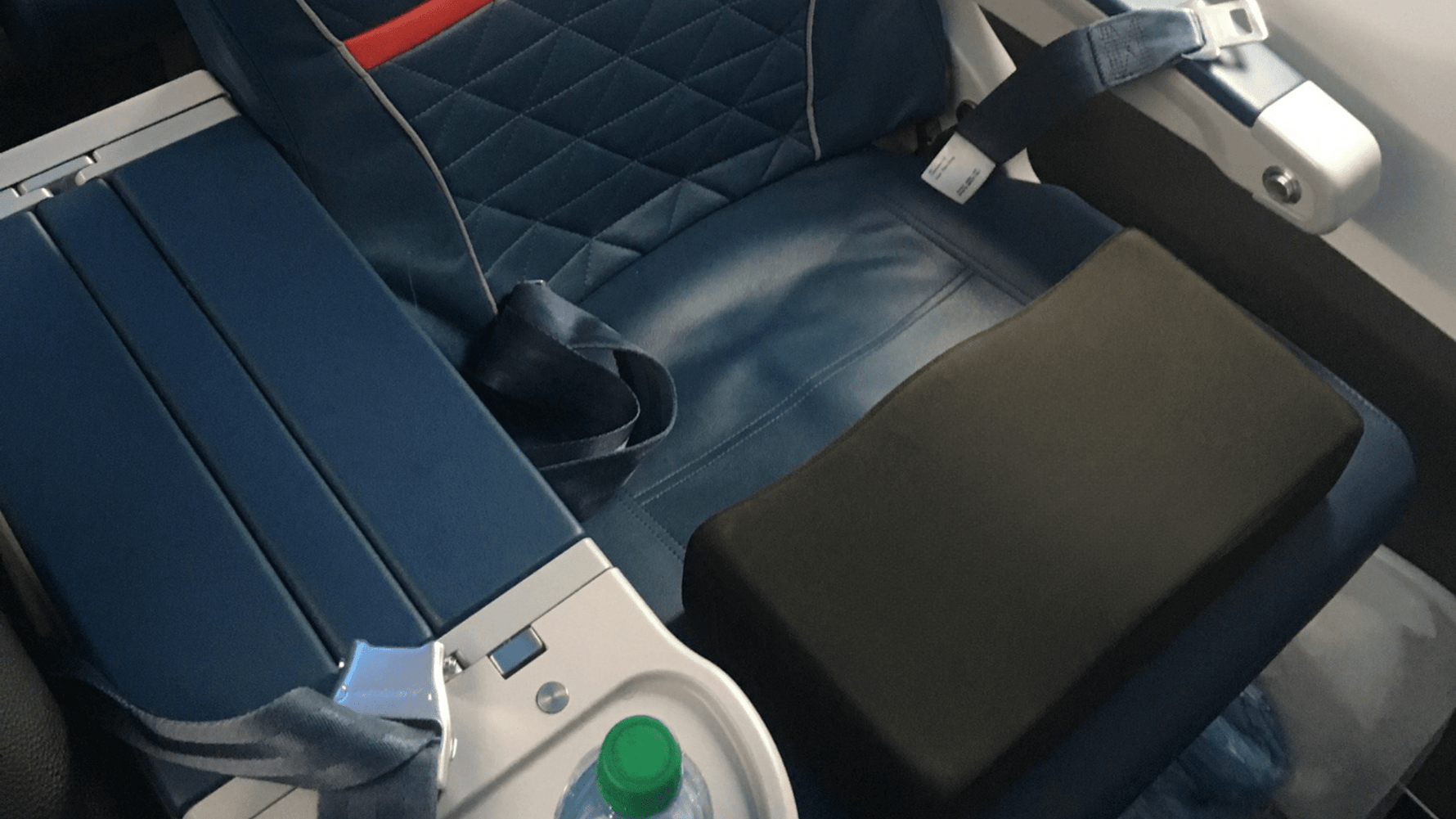
Ressources de récupération BBL
puis-je utiliser l'oreiller bbl dans l'avion
- #aossa bbl pillow
- #avocado bbl pillow
- #bbl back pillow
- #bbl bathroom pillow
- #bbl body pillow
- #bbl booty pillow after surgery
- #bbl cushion pillow
- #bbl doughnut pillow
- #bbl drake pillow
- #bbl face down pillow
- #bbl pillow after surgery
- #bbl pillow airplane
- #bbl pillow aliexpress
- #bbl pillow alternative
- #bbl pillow amazon
- #bbl pillow and back support
- #bbl pillow australia
- #bbl pillow bag
- #bbl pillow bed
- #bbl pillow benefits
- #bbl pillow best
- #bbl pillow black
- #bbl pillow boppy
- #bbl pillow car
- #bbl pillow case
- #bbl pillow chair
- #bbl pillow cheap
- #bbl pillow colombia
- #bbl pillow cover
- #bbl pillow diy
- #bbl pillow donut
- #bbl pillow driving
- #bbl pillow dubai
- #bbl pillow for airplane
- #bbl pillow for bed
- #bbl pillow for car
- #bbl pillow for chair
- #bbl pillow for driving
- #bbl pillow for flying
- #bbl pillow for how long
- #bbl pillow for office chair
- #bbl pillow for sale
- #bbl pillow for sale near me
- #bbl pillow for sitting
- #bbl pillow for sleeping
- #bbl pillow for sleeping on back
- #bbl pillow for toilet
- #bbl pillow for work
- #bbl pillow how long
- #bbl pillow how to use
- #bbl pillow hurts
- #bbl pillow in store
- #bbl pillow istanbul
- #bbl pillow kenya
- #bbl pillow kuwait
- #bbl pillow meaning
- #bbl pillow miami
- #bbl pillow near me
- #bbl pillow nearby
- #bbl pillow on airplane
- #bbl pillow on plane
- #bbl pillow or boppy
- #bbl pillow para que sirve
- #bbl pillow post surgery
- #bbl pillow qatar
- #bbl pillow reddit
- #bbl pillow reviews
- #bbl pillow round
- #bbl pillow sale
- #bbl pillow seat
- #bbl pillow set
- #bbl pillow shein
- #bbl pillow sitting
- #bbl pillow size
- #bbl pillow sleep
- #bbl pillow store near me
- #bbl pillow target
- #bbl pillow temu
- #bbl pillow to drive
- #bbl pillow to lay down
- #bbl pillow to sit
- #bbl pillow to sleep
- #bbl pillow to sleep on back
- #bbl pillow toilet
- #bbl pillow uk
- #bbl pillow uncomfortable
- #bbl pillow use
- #bbl pillow vs boppy pillow
- #bbl pillow walmart
- #bbl pillow wave
- #bbl pillow while driving
- #bbl pillow wholesale
- #bbl pillow with back support
- #bbl pillow with hole
- #bbl pillows alabama birmingham
- #bbl pillows alaska anchorage
- #bbl pillows arizona phoenix
- #bbl pillows arizona tucson
- #bbl pillows arkansas little rock
- #bbl pillows california anaheim
- #bbl pillows california bakersfield
- #bbl pillows california fresno
- #bbl pillows california long beach
- #bbl pillows california los angeles
- #bbl pillows california oakland
- #bbl pillows california sacramento
- #bbl pillows california san diego
- #bbl pillows california san francisco
- #bbl pillows california san jose
- #bbl pillows colorado aurora
- #bbl pillows colorado colorado springs
- #bbl pillows colorado denver
- #bbl pillows connecticut bridgeport
- #bbl pillows connecticut new haven
- #bbl pillows connecticut stamford
- #bbl pillows delaware wilmington
- #bbl pillows florida cape coral
- #bbl pillows florida fort lauderdale
- #bbl pillows florida jacksonville
- #bbl pillows florida miami
- #bbl pillows florida orlando
- #bbl pillows florida pembroke pines
- #bbl pillows florida port st. lucie
- #bbl pillows florida st. petersburg
- #bbl pillows florida tallahassee
- #bbl pillows florida tampa
- #bbl pillows georgia atlanta
- #bbl pillows georgia augusta
- #bbl pillows georgia columbus
- #bbl pillows georgia macon
- #bbl pillows georgia savannah
- #bbl pillows hawaii hilo
- #bbl pillows hawaii honolulu
- #bbl pillows idaho boise
- #bbl pillows illinois aurora
- #bbl pillows illinois chicago
- #bbl pillows illinois joliet
- #bbl pillows illinois rockford
- #bbl pillows indiana evansville
- #bbl pillows indiana fort wayne
- #bbl pillows indiana indianapolis
- #bbl pillows indiana south bend
- #bbl pillows iowa cedar rapids
- #bbl pillows iowa davenport
- #bbl pillows iowa des moines
- #bbl pillows kansas kansas city
- #bbl pillows kansas overland park
- #bbl pillows kansas wichita
- #bbl pillows kentucky lexington
- #bbl pillows kentucky louisville
- #bbl pillows louisiana baton rouge
- #bbl pillows louisiana new orleans
- #bbl pillows louisiana shreveport
- #bbl pillows maine portland
- #bbl pillows maryland baltimore
- #bbl pillows maryland gaithersburg
- #bbl pillows maryland rockville
- #bbl pillows massachusetts boston
- #bbl pillows massachusetts springfield
- #bbl pillows massachusetts worcester
- #bbl pillows michigan detroit
- #bbl pillows michigan grand rapids
- #bbl pillows michigan sterling heights
- #bbl pillows michigan warren
- #bbl pillows minnesota minneapolis
- #bbl pillows minnesota st. paul
- #bbl pillows mississippi jackson
- #bbl pillows missouri kansas city
- #bbl pillows missouri springfield
- #bbl pillows missouri st. louis
- #bbl pillows montana billings
- #bbl pillows nebraska lincoln
- #bbl pillows nebraska omaha
- #bbl pillows nevada las vegas
- #bbl pillows nevada reno
- #bbl pillows new hampshire manchester
- #bbl pillows new jersey jersey city
- #bbl pillows new jersey newark
- #bbl pillows new jersey paterson
- #bbl pillows new mexico albuquerque
- #bbl pillows new york buffalo
- #bbl pillows new york new york
- #bbl pillows new york rochester
- #bbl pillows new york yonkers
- #bbl pillows north carolina charlotte
- #bbl pillows north carolina durham
- #bbl pillows north carolina greensboro
- #bbl pillows north carolina raleigh
- #bbl pillows north dakota fargo
- #bbl pillows ohio cincinnati
- #bbl pillows ohio cleveland
- #bbl pillows ohio columbus
- #bbl pillows ohio toledo
- #bbl pillows oklahoma oklahoma city
- #bbl pillows oklahoma tulsa
- #bbl pillows oregon portland
- #bbl pillows oregon salem
- #bbl pillows pennsylvania allentown
- #bbl pillows pennsylvania philadelphia
- #bbl pillows pennsylvania pittsburgh
- #bbl pillows rhode island providence
- #bbl pillows south carolina charleston
- #bbl pillows south carolina columbia
- #bbl pillows south carolina north charleston
- #bbl pillows south dakota sioux falls
- #bbl pillows tennessee knoxville
- #bbl pillows tennessee memphis
- #bbl pillows tennessee nashville
- #bbl pillows texas arlington
- #bbl pillows texas austin
- #bbl pillows texas corpus christi
- #bbl pillows texas dallas
- #bbl pillows texas el paso
- #bbl pillows texas fort worth
- #bbl pillows texas houston
- #bbl pillows texas plano
- #bbl pillows texas san antonio
- #bbl pillows utah salt lake city
- #bbl pillows utah west valley city
- #bbl pillows vermont burlington
- #bbl pillows virginia chesapeake
- #bbl pillows virginia norfolk
- #bbl pillows virginia virginia beach
- #bbl pillows washington seattle
- #bbl pillows washington spokane
- #bbl pillows washington tacoma
- #bbl pillows west virginia charleston
- #bbl pillows wisconsin green bay
- #bbl pillows wisconsin madison
- #bbl pillows wisconsin milwaukee
- #bbl pillows wyoming cheyenne
- #bbl post op pillow
- #bbl recovery pillow
- #bbl soft pillow
- #bbl stomach pillow
- #bbl thigh pillow
- #bbl travel pillow
- #bbl triangle pillow
- #bbl tummy tuck pillow
- #bbl wedge pillow
- #best bbl donut pillow
- #best bbl pillow after surgery
- #best bbl pillow for airplane
- #best bbl pillow for driving
- #best bbl pillow for sitting
- #best bbl pillow reddit
- #best bbl recovery pillow
- #cheap bbl pillow near me
- #comfortable bbl pillow
- #contour bbl pillow
- #contourmd bbl booty pillow
- #contourmd bbl pillow
- #discreet bbl pillow
- #discrete bbl pillow
- #does bbl pillow work
- #hombys bbl pillow
- #how do you use a bbl pillow
- #how long do you have to use bbl pillow
- #how to use bbl pillow in car
- #how to use bbl pillow on plane
- #inflatable bbl pillow
- #is a bbl pillow necessary
- #lale bbl pillow
- #large bbl pillow
- #licious bbl pillow
- #mini bbl pillow
- #pillow after bbl
- #sitting after bbl without pillow
- #sitting on bbl pillow after surgery
- #the bbl pillow
- #the official bbl pillow corp
- #thick bbl pillow
- #vertical bbl pillow
- #what does a bbl pillow look like
- #what is a bbl pillow
- #xl bbl pillow
- #yesindeed bbl pillow
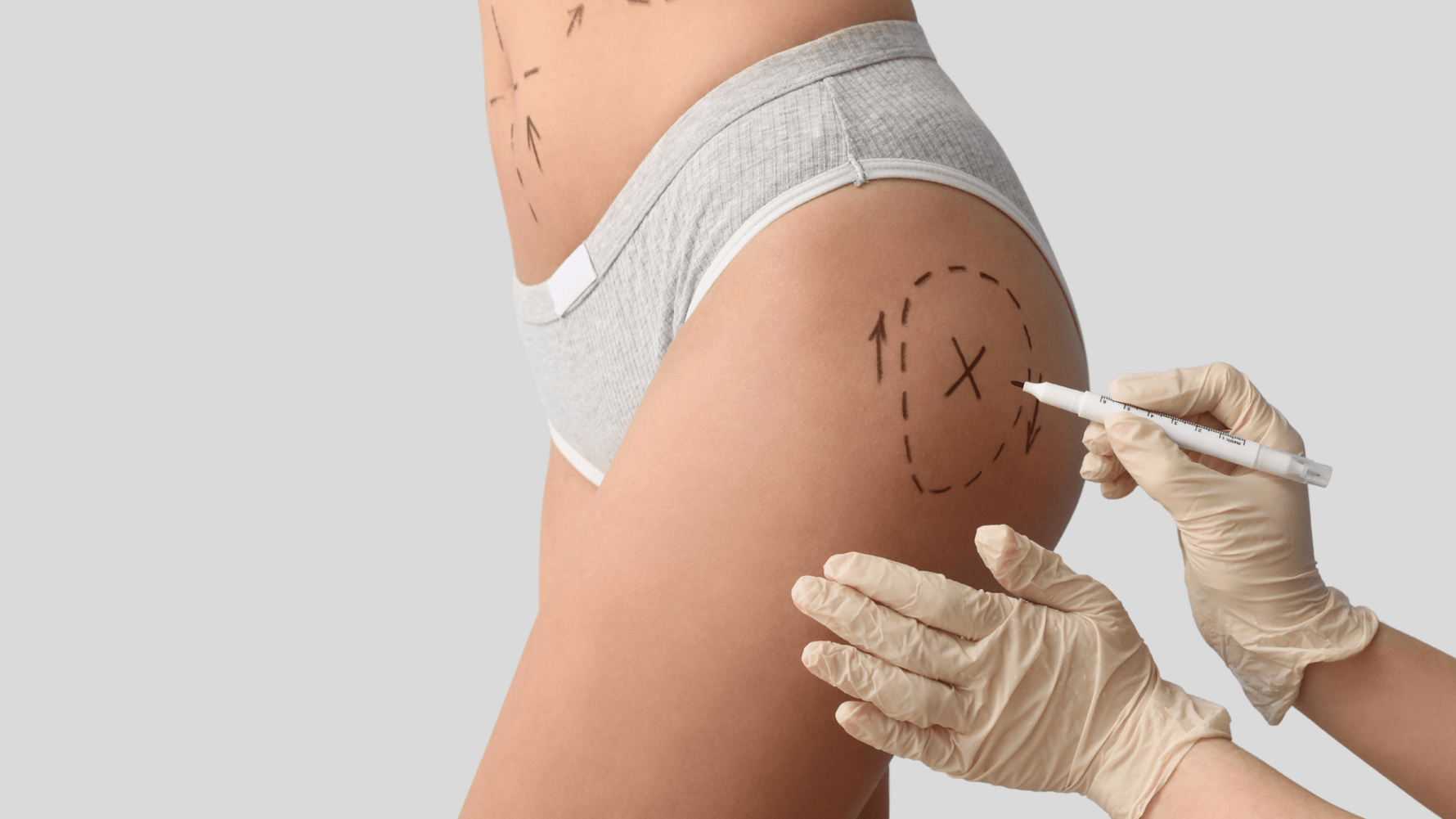
Ressources de récupération BBL
- #Almohada BBL
- #almohada BBL Amazon
- #almohada BBL Arizona
- #almohada BBL Atlanta
- #almohada BBL Bombshell
- #almohada BBL Boston
- #almohada BBL Bronx
- #almohada BBL Brooklyn
- #almohada BBL California
- #almohada BBL cerca de mí
- #almohada BBL cerca de mí Atlanta
- #almohada BBL cerca de mí Chicago
- #almohada BBL cerca de mí Dallas
- #almohada BBL cerca de mí Las Vegas
- #almohada BBL cerca de mí Los Ángeles
- #almohada BBL cerca de mí Miami
- #almohada BBL cerca de mí Nueva York
- #almohada BBL cerca de mí Phoenix
- #almohada BBL cerca de mí San Antonio
- #almohada BBL cerca de mí San Diego
- #almohada BBL cerca de mí San Francisco
- #almohada BBL cerca de mí San Jose
- #almohada BBL Chicago
- #almohada BBL cómoda
- #almohada bbl cómoda para el coche
- #almohada BBL Dallas
- #almohada bbl de apoyo
- #almohada bbl de espuma
- #almohada BBL de viaje
- #almohada BBL después de cirugía BBL
- #almohada bbl después de la cirugía
- #almohada BBL Detroit
- #almohada BBL duradera
- #almohada BBL eBay
- #almohada BBL El Paso
- #almohada BBL en venta
- #almohada BBL ergonómica
- #almohada BBL Florida
- #almohada BBL Georgia
- #almohada bbl grande
- #almohada BBL Houston
- #almohada BBL Illinois
- #almohada bbl inflable
- #almohada BBL Jacksonville
- #almohada BBL Las Vegas
- #almohada BBL Los Angeles
- #almohada BBL Manhattan
- #almohada BBL Massachusetts
- #almohada BBL Miami
- #almohada BBL Miami Beach
- #almohada BBL Michigan
- #almohada bbl mikami
- #almohada BBL Nevada
- #almohada BBL Nueva York
- #almohada BBL Nueva York City
- #almohada BBL Orlando
- #almohada bbl ortopédica
- #almohada BBL para aliviar el dolor
- #almohada BBL para avión
- #almohada BBL para carro
- #almohada BBL para carro Atlanta
- #almohada BBL para carro Chicago
- #almohada BBL para carro Dallas
- #almohada BBL para carro El Paso
- #almohada BBL para carro Houston
- #almohada BBL para carro Las Vegas
- #almohada BBL para carro Los Ángeles
- #almohada BBL para carro Miami
- #almohada BBL para carro Nueva York
- #almohada BBL para carro Phoenix
- #almohada BBL para carro San Antonio
- #almohada BBL para carro San Diego
- #almohada BBL para carro San Francisco
- #almohada BBL para carro San Jose
- #almohada BBL para coche
- #almohada BBL para comodidad
- #almohada BBL para comprar
- #almohada BBL para conducir
- #almohada BBL para después de cirugía
- #almohada BBL para diferentes tipos de cuerpo
- #almohada bbl para dormir
- #almohada BBL para hombres
- #almohada BBL para hombres vs mujeres
- #almohada bbl para levantamiento de gluteos
- #almohada BBL para mujeres
- #almohada bbl para nalgas
- #almohada BBL para personas altas
- #almohada BBL para personas bajas
- #almohada BBL para recuperación
- #almohada BBL para sentarse
- #almohada BBL para viajar
- #almohada BBL para viaje
- #almohada BBL para viajes
- #almohada BBL para viajes en automóvil
- #almohada BBL para viajes largos en automóvil
- #almohada BBL para viajes por carretera
- #almohada bbl para volar
- #almohada BBL para vuelos en avión
- #almohada BBL para vuelos largos
- #almohada BBL patentada
- #almohada BBL Pennsylvania
- #almohada BBL Philadelphia
- #almohada BBL Phoenix
- #almohada BBL portátil
- #almohada BBL postoperatoria
- #almohada bbl premium
- #almohada BBL Queens
- #almohada bbl recomendada por el doctor
- #almohada BBL recuperación
- #almohada BBL San Antonio
- #almohada BBL San Diego
- #almohada BBL San Francisco
- #almohada BBL San Jose
- #almohada BBL Seattle
- #almohada BBL Tampa
- #almohada BBL Texas
- #almohada bbl tipo cuña
- #almohada bbl tipo dona
- #almohada bbl única
- #almohada BBL vs almohada normal
- #almohada BBL Washington
- #almohada BBL Washington DC
- #aossa bbl pillow
- #avocado bbl pillow
- #bbl back pillow
- #bbl bathroom pillow
- #bbl body pillow
- #bbl booty pillow after surgery
- #bbl cushion pillow
- #bbl doughnut pillow
- #bbl drake pillow
- #bbl face down pillow
- #bbl pillow after surgery
- #bbl pillow airplane
- #bbl pillow aliexpress
- #bbl pillow alternative
- #bbl pillow amazon
- #bbl pillow and back support
- #bbl pillow australia
- #bbl pillow bag
- #bbl pillow bed
- #bbl pillow benefits
- #bbl pillow best
- #bbl pillow black
- #bbl pillow boppy
- #bbl pillow car
- #bbl pillow case
- #bbl pillow chair
- #bbl pillow cheap
- #bbl pillow colombia
- #bbl pillow cover
- #bbl pillow diy
- #bbl pillow donut
- #bbl pillow driving
- #bbl pillow dubai
- #bbl pillow for airplane
- #bbl pillow for bed
- #bbl pillow for car
- #bbl pillow for chair
- #bbl pillow for driving
- #bbl pillow for flying
- #bbl pillow for how long
- #bbl pillow for office chair
- #bbl pillow for sale
- #bbl pillow for sale near me
- #bbl pillow for sitting
- #bbl pillow for sleeping
- #bbl pillow for sleeping on back
- #bbl pillow for toilet
- #bbl pillow for work
- #bbl pillow how long
- #bbl pillow how to use
- #bbl pillow hurts
- #bbl pillow in store
- #bbl pillow istanbul
- #bbl pillow kenya
- #bbl pillow kuwait
- #bbl pillow meaning
- #bbl pillow miami
- #bbl pillow near me
- #bbl pillow nearby
- #bbl pillow on airplane
- #bbl pillow on plane
- #bbl pillow or boppy
- #bbl pillow para que sirve
- #bbl pillow post surgery
- #bbl pillow qatar
- #bbl pillow reddit
- #bbl pillow reviews
- #bbl pillow round
- #bbl pillow sale
- #bbl pillow seat
- #bbl pillow set
- #bbl pillow shein
- #bbl pillow sitting
- #bbl pillow size
- #bbl pillow sleep
- #bbl pillow store near me
- #bbl pillow target
- #bbl pillow temu
- #bbl pillow to drive
- #bbl pillow to lay down
- #bbl pillow to sit
- #bbl pillow to sleep
- #bbl pillow to sleep on back
- #bbl pillow toilet
- #bbl pillow uk
- #bbl pillow uncomfortable
- #bbl pillow use
- #bbl pillow vs boppy pillow
- #bbl pillow walmart
- #bbl pillow wave
- #bbl pillow while driving
- #bbl pillow wholesale
- #bbl pillow with back support
- #bbl pillow with hole
- #bbl post op pillow
- #bbl recovery pillow
- #bbl soft pillow
- #bbl stomach pillow
- #bbl thigh pillow
- #bbl travel pillow
- #bbl triangle pillow
- #bbl tummy tuck pillow
- #bbl wedge pillow
- #best bbl donut pillow
- #best bbl pillow after surgery
- #best bbl pillow for airplane
- #best bbl pillow for driving
- #best bbl pillow for sitting
- #best bbl pillow reddit
- #best bbl recovery pillow
- #cheap bbl pillow near me
- #cojin bbl
- #comfortable bbl pillow
- #contour bbl pillow
- #contourmd bbl booty pillow
- #contourmd bbl pillow
- #discreet bbl pillow
- #discrete bbl pillow
- #does bbl pillow work
- #hombys bbl pillow
- #how do you use a bbl pillow
- #how long do you have to use bbl pillow
- #how to use bbl pillow in car
- #how to use bbl pillow on plane
- #inflatable bbl pillow
- #is a bbl pillow necessary
- #lale bbl pillow
- #large bbl pillow
- #licious bbl pillow
- #mini bbl pillow
- #pillow after bbl
- #sitting after bbl without pillow
- #sitting on bbl pillow after surgery
- #tabla abdominal
- #the bbl pillow
- #the official bbl pillow corp
- #thick bbl pillow
- #vertical bbl pillow
- #what does a bbl pillow look like
- #what is a bbl pillow
- #xl bbl pillow
- #yesindeed bbl pillow

Ressources de récupération BBL
Combien de temps dure une procédure BBL ?
- ##1 BBL Surgeon in Miami
- #2025 best bbl pillow bombshell booty pillow
- #2025 best bbl pillow my booty pillow
- #a butt pillow
- #aossa bbl pillow
- #avocado bbl pillow
- #bbl back pillow
- #bbl bathroom pillow
- #bbl body pillow
- #bbl booty pillow
- #bbl booty pillow after surgery
- #BBL Boston
- #bbl butt pillow
- #bbl butt pillow near me
- #bbl butt pillows
- #bbl butt pillows near me
- #BBL cost Houston
- #BBL cost in Los Angeles with financing
- #bbl cushion pillow
- #BBL Dallas
- #BBL day of surgery
- #BBL Detroit
- #BBL doctors San Francisco
- #bbl doughnut pillow
- #bbl drake pillow
- #BBL duration
- #bbl face down pillow
- #BBL fat transfer technique using Non-surgical
- #BBL for plus-size patients in Houston
- #BBL Hartford
- #BBL Houston
- #BBL in New York City with hyaluronic acid
- #BBL Jacksonville
- #bbl kit bbl pillow bbl post surgery supplies kit
- #BBL Las Vegas
- #BBL liposuction
- #BBL Los Angeles
- #BBL Miami
- #BBL New York City
- #BBL Philadelphia
- #bbl pillow after surgery
- #bbl pillow airplane
- #bbl pillow aliexpress
- #bbl pillow alternative
- #bbl pillow amazon
- #bbl pillow and back support
- #bbl pillow australia
- #bbl pillow bag
- #bbl pillow bed
- #bbl pillow benefits
- #bbl pillow best
- #bbl pillow black
- #bbl pillow boppy
- #bbl pillow car
- #bbl pillow case
- #bbl pillow chair
- #bbl pillow cheap
- #bbl pillow colombia
- #bbl pillow cover
- #bbl pillow diy
- #bbl pillow donut
- #bbl pillow driving
- #bbl pillow dubai
- #bbl pillow for airplane
- #bbl pillow for bed
- #bbl pillow for car
- #bbl pillow for chair
- #bbl pillow for driving
- #bbl pillow for flying
- #bbl pillow for how long
- #bbl pillow for office chair
- #bbl pillow for sale
- #bbl pillow for sale near me
- #bbl pillow for sitting
- #bbl pillow for sleeping
- #bbl pillow for sleeping on back
- #bbl pillow for toilet
- #bbl pillow for work
- #bbl pillow how long
- #bbl pillow how to use
- #bbl pillow hurts
- #bbl pillow in store
- #bbl pillow istanbul
- #bbl pillow kenya
- #bbl pillow kuwait
- #bbl pillow meaning
- #bbl pillow miami
- #bbl pillow near me
- #bbl pillow nearby
- #bbl pillow on airplane
- #bbl pillow on plane
- #bbl pillow or boppy
- #bbl pillow para que sirve
- #bbl pillow post surgery
- #bbl pillow qatar
- #bbl pillow reddit
- #bbl pillow reviews
- #bbl pillow round
- #bbl pillow sale
- #bbl pillow seat
- #bbl pillow set
- #bbl pillow shein
- #bbl pillow sitting
- #bbl pillow size
- #bbl pillow sleep
- #bbl pillow store near me
- #bbl pillow target
- #bbl pillow temu
- #bbl pillow to drive
- #bbl pillow to lay down
- #bbl pillow to sit
- #bbl pillow to sleep
- #bbl pillow to sleep on back
- #bbl pillow toilet
- #bbl pillow uk
- #bbl pillow uncomfortable
- #bbl pillow use
- #bbl pillow vs boppy pillow
- #bbl pillow walmart
- #bbl pillow wave
- #bbl pillow while driving
- #bbl pillow wholesale
- #bbl pillow with back support
- #bbl pillow with hole
- #bbl pillows near me
- #BBL Pittsburgh
- #BBL planning
- #bbl post op pillow
- #bbl post surgery kit
- #bbl post surgery supplies
- #BBL procedure time
- #BBL recovery
- #bbl recovery pillow
- #BBL recovery tips after liposuction of the abdomen
- #BBL results
- #BBL risks
- #BBL Sacramento
- #BBL San Antonio
- #bbl soft pillow
- #BBL specialists Miami
- #bbl stomach pillow
- #BBL surgeon
- #BBL surgeons in Miam
- #BBL surgeons Miami
- #BBL surgery
- #BBL surgery Atlanta GA
- #BBL surgery Boston MA
- #BBL surgery Fort Lauderdale FL
- #BBL surgery Miami FL
- #BBL surgery Orlando FL
- #BBL surgery Portland OR
- #BBL Tampa
- #bbl thigh pillow
- #BBL timeline
- #bbl travel pillow
- #bbl triangle pillow
- #bbl tummy tuck pillow
- #BBL Washington
- #bbl wedge pillow
- #BBL with liposuction of flanks and thighs in Atlanta
- #best BBL clinics Miami
- #best bbl donut pillow
- #best bbl pillow
- #best bbl pillow after surgery
- #best bbl pillow for airplane
- #best bbl pillow for driving
- #best bbl pillow for sitting
- #best bbl pillow reddit
- #best bbl pillows
- #best bbl recovery pillow
- #Best BBL surgeons in Miami for hip dips
- #booty pillow
- #booty pilows
- #Brazilian butt lift
- #Brazilian butt lift Atlanta
- #Brazilian butt lift Austin
- #Brazilian butt lift Baltimore
- #Brazilian butt lift BBL BBL surgery BBL before and after BBL cost BBL recovery BBL results BBL risks BBL complications BBL fat transfer BBL liposuction BBL implants BBL near me Best BBL surgeons BBL specialist
- #Brazilian butt lift Boston
- #Brazilian butt lift Charlotte
- #Brazilian butt lift Chicago
- #Brazilian butt lift Cincinnati
- #Brazilian butt lift Cleveland
- #Brazilian butt lift Dallas
- #Brazilian butt lift Denver
- #Brazilian butt lift Detroit
- #Brazilian butt lift Hartford
- #Brazilian butt lift Houston
- #Brazilian butt lift Indianapolis
- #Brazilian butt lift Jacksonville
- #Brazilian butt lift Kansas City
- #Brazilian butt lift Las Vegas
- #Brazilian butt lift Los Angeles
- #Brazilian butt lift Memphis
- #Brazilian butt lift Miami
- #Brazilian butt lift Milwaukee
- #Brazilian butt lift Nashville
- #Brazilian butt lift New York
- #Brazilian butt lift Oklahoma City
- #Brazilian butt lift Orlando
- #Brazilian butt lift Philadelphia
- #Brazilian butt lift Phoenix
- #Brazilian butt lift Pittsburgh
- #Brazilian butt lift Portland
- #Brazilian butt lift Raleigh
- #Brazilian butt lift Richmond
- #Brazilian butt lift Sacramento
- #Brazilian butt lift San Antonio
- #Brazilian butt lift San Diego
- #Brazilian butt lift San Francisco
- #Brazilian butt lift Seattle
- #Brazilian butt lift Tampa
- #Brazilian butt lift Washington
- #butt pillow
- #buttock augmentation
- #cheap bbl pillow near me
- #cojin bbl
- #comfortable bbl pillow
- #contour bbl pillow
- #contourmd bbl booty pillow
- #contourmd bbl pillow
- #discreet bbl pillow
- #discrete bbl pillow
- #does bbl pillow work
- #fat grafting
- #fat harvesting
- #female urination device
- #find a BBL surgeon in Miami
- #hombys bbl pillow
- #how do you use a bbl pillow
- #how long do you have to use bbl pillow
- #how long does a BBL take
- #how to use bbl pillow in car
- #how to use bbl pillow on plane
- #inflatable bbl pillow
- #is a bbl pillow necessary
- #lale bbl pillow
- #large bbl pillow
- #licious bbl pillow
- #liposuction procedure
- #mini bbl pillow
- #pillow after bbl
- #pillow for bbl
- #pillows for bbl
- #plastic surgery
- #sitting after bbl without pillow
- #sitting on bbl pillow after surgery
- #the bbl pillow
- #the official bbl pillow corp
- #thick bbl pillow
- #top BBL doctors Miami
- #top BBL surgeons Denver
- #top BBL surgeons Richmond
- #vertical bbl pillow
- #what does a bbl pillow look like
- #what is a bbl pillow
- #xl bbl pillow
- #yesindeed bbl pillow

Ressources de récupération BBL
- #"bbl Pillows" Blowout Sale
- #"bbl Pillows" clearance Sale
- #"bbl Pillows" Sale
- ##1 BBL PILLOW
- #2025 BBL aftercare
- #2025 BBL aftercare Miami
- #2025 BBL aftercare near me
- #2025 BBL before and after
- #2025 BBL car pillow
- #2025 BBL complications
- #2025 BBL compression garment
- #2025 BBL cushion
- #2025 BBL donut pillow
- #2025 BBL driving pillow
- #2025 BBL healing process
- #2025 BBL infection
- #2025 bbl list of needs
- #2025 BBL pain management
- #2025 bbl pillow
- #2025 BBL pillow for car
- #2025 BBL pillow for plane
- #2025 BBL pillow for sitting
- #2025 BBL plane pillow
- #2025 bbl post surgery supplies
- #2025 BBL post-op care
- #2025 BBL recovery
- #2025 BBL recovery dos and don'ts
- #2025 BBL recovery guide
- #2025 BBL recovery instructions
- #2025 BBL recovery Miami
- #2025 BBL recovery near me
- #2025 BBL recovery sitting tips
- #2025 BBL recovery stages
- #2025 BBL recovery timeline
- #2025 BBL recovery tips
- #2025 BBL recovery tips for exercise
- #2025 BBL recovery tips for work
- #2025 BBL results
- #2025 BBL seroma
- #2025 BBL sitting pillow
- #2025 BBL surgeon Miami
- #2025 BBL swelling
- #2025 BBL travel
- #2025 BBL travel cushion
- #2025 BBL travel tips
- #2025 best bbl cushion for sitting
- #2025 best bbl driving pillow
- #2025 best bbl pillow
- #2025 best bbl pillow for car
- #2025 best bbl pillow for driving
- #2025 best bbl pillow for plane
- #2025 best bbl pillow for travel
- #2025 best bbl pillow for work
- #2025 best bbl pillows
- #2025 best bbl post surgery supplies
- #2025 best bbl post up supplies list
- #2025 Best BBL surgeon Miami
- #2025 best bbl surgeons miami
- #2025 Bombshell Booty Pillow
- #2025 Brazilian butt lift aftercare
- #2025 Brazilian butt lift recovery
- #2025 Can you sit on a toilet after a BBL?
- #2025 Can you sleep on your side after a BBL?
- #2025 Cojín bbl Postoperatorio
- #2025 Cojín Postoperatorio
- #2025 Cojín Postoperatorio bbl
- #2025 cosmetic surgery
- #2025 cosmetic surgery trends
- #2025 Fat transfer recovery
- #2025 GUIDE TO A BRAZILIAN BUTT LIFT
- #2025 guide what is a bbl pillow
- #2025 guide when can i sit after a bbl
- #2025 How long after a BBL can I fly on a plane?
- #2025 How long after a BBL can I sit in a car?
- #2025 How long after a BBL can I sit on the toilet?
- #2025 How long after BBL can I sit?
- #2025 How long after BBL can you sit normally?
- #2025 How to manage pain after a BBL?
- #2025 How to sit after BBL
- #2025 How to travel after BBL
- #2025 How to use a BBL pillow after surgery?
- #2025 plastic surgery
- #2025 PLASTIC SURGERY TRENDS
- #2025 Safe sitting after BBL
- #2025 Sitting after BBL
- #2025 Sitting on toilet after BBL
- #2025 Sitting with a BBL
- #2025 Tips for sleeping after a BBL
- #2025 Traveling after BBL
- #2025 What are the signs of BBL complications?
- #2025 What is the best BBL pillow for travel?
- #2025 What to wear during BBL recovery?
- #2025 When can I sit after BBL?
- #2025 When can you wear jeans after a BBL?
- #2nd bbl
- #2nd bbl round 2
- #3 pack lipo foam
- #affordable bbl surgery in miami
- #affordable bbl surgery miami
- #affordable bbl surgery pillow
- #after bbl
- #after bbl brazilian butt lift care
- #after bbl butt lift care
- #after bbl care
- #After BBL Surgery
- #after bbl surgery must haves
- #after brazilian butt lift surgery
- #all types of booty
- #Almohada BBL
- #almohada BBL Amazon
- #almohada BBL Arizona
- #almohada BBL Atlanta
- #almohada BBL Bombshell
- #almohada BBL Boston
- #almohada BBL Bronx
- #almohada BBL Brooklyn
- #almohada BBL California
- #almohada BBL cerca de mí
- #almohada BBL cerca de mí Atlanta
- #almohada BBL cerca de mí Chicago
- #almohada BBL cerca de mí Dallas
- #almohada BBL cerca de mí El Paso
- #almohada BBL cerca de mí Florida
- #almohada BBL cerca de mí Houston
- #almohada BBL cerca de mí Las Vegas
- #almohada BBL cerca de mí Miami
- #almohada BBL cerca de mí Nueva York
- #almohada BBL cerca de mí Phoenix
- #almohada BBL cerca de mí San Antonio
- #almohada BBL cerca de mí San Diego
- #almohada BBL cerca de mí San Francisco
- #almohada BBL cerca de mí San Jose
- #almohada BBL Chicago
- #amazon bbl pillow for car
- #amazon booty pillow
- #amazon butt pillow
- #atlanta BBL surgery
- #bbl booty pillow
- #BBL Before And After | Brazilian Butt Lift Miami
- #bbl booty pillow after surgery
- #bbl booty pillow near me
- #BBL Booty Pillow-BBL Supplies After Surgery kit
- #BBL Booty Pillow-BBL Supplies After Surgery kit-BBL
- #BBL Booty Pillow-BBL Supplies After Surgery kit-Brazilian butt lift
- #bbl booty pillows
- #bbl booty pillows near me
- #bbl booty shaped pillow
- #bbl booty shaped pillows
- #BBL BRAZILIAN BUTT LIFT PILLOW
- #BBL Brazilian Butt Lift Pillow Post Surgery
- #BBL Brazilian Butt Lift Pillow Post Surgery Brazilian Butt Lift
- #bbl brazilian buttock lift
- #bbl bum pillow
- #bbl bum pillows
- #bbl butt pillow
- #bbl butt pillow near me
- #bbl butt pillows
- #bbl butt pillows near me
- #bbl buttock pillow
- #bbl buttock pillows
- #bbl chair
- #bbl chair pillow
- #bbl chair to sleep in
- #bbl chair with hole
- #bbl chairs
- #bbl check list
- #bbl cost fat transfer to buttocks
- #bbl drizzy
- #bbl kit
- #bbl kit after
- #BBL Kit de recuperación de BBL
- #bbl kits
- #bbl pillow after surgey sitting
- #bbl pillow near me
- #bbl pillow nearby
- #bbl pillow shaped like a butt
- #bbl pillows for car
- #bbl pillows near me
- #bbl pillows nearby
- #bbl pillows shaped like a butt
- #bbl post bbl care
- #bbl post surgery recovery supplies
- #bbl post surgery supply
- #bbl post surgical supplies
- #bbl post surgical supplies miami
- #bbl post surgical supply
- #bbl recovery
- #bbl recovery checklist
- #bbl recovery mattress
- #bbl recovery pillow
- #bbl recovery pillows
- #bbl supplies
- #bbl supplies post surgery
- #bbl surgery pillow
- #bbl surgery supplies
- #bbl surgery supply
- #bbl wear
- #best bbl pillow
- #best bbl pillow for sitting
- #best bbl pillows
- #best post lipo compression garments
- #big booty pillow
- #big booty sleeping
- #bombshell booty bbl pillow
- #booty pillow
- #booty pillows
- #booty shaped pillow
- #booty shaped pillows
- #boppy pillow without hole
- #boppy with no hole
- #brazilian booty
- #brazilian butt lift booty pillow
- #brazilian butt lift pillow
- #brazilian butt lift pillows
- #brazilian buttock pillow
- #bubble butt maintain your bbl surgery results
- #bubble butt save the fat after bbl
- #bum pillow
- #bum pillows
- #butt pillow amazon
- #butt pillow ebay
- #butt pillow for plane
- #butt pillow for travel
- #butt pillow near me
- #butt pillow walmart
- #butt pillows
- #butt support
- #cojin bbl
- #cojin bbl postoperatorio
- #cojin postoperatorio bbl
- #cojines bbl
- #happy hump day with a fat ass
- #how much fat is removed during liposuction
- #how much is bbl surgery
- #lipo 360 and fat transfer to buttocks cost
- #pillow for bbl
- #pillow for butt
- #pillow shaped like a butt
- #pillow shaped like a woman
- #pillows for bbl
- #pillows for butt
- #pillows shaped like a butt
- #post bbl care
- #post liposuction foam
- #post surgical pillow
- #vaginal funnel
- #what's a boppy
- #wjat is a bbl
- #woman outdoor peeing device
- #xxl bbl pillow
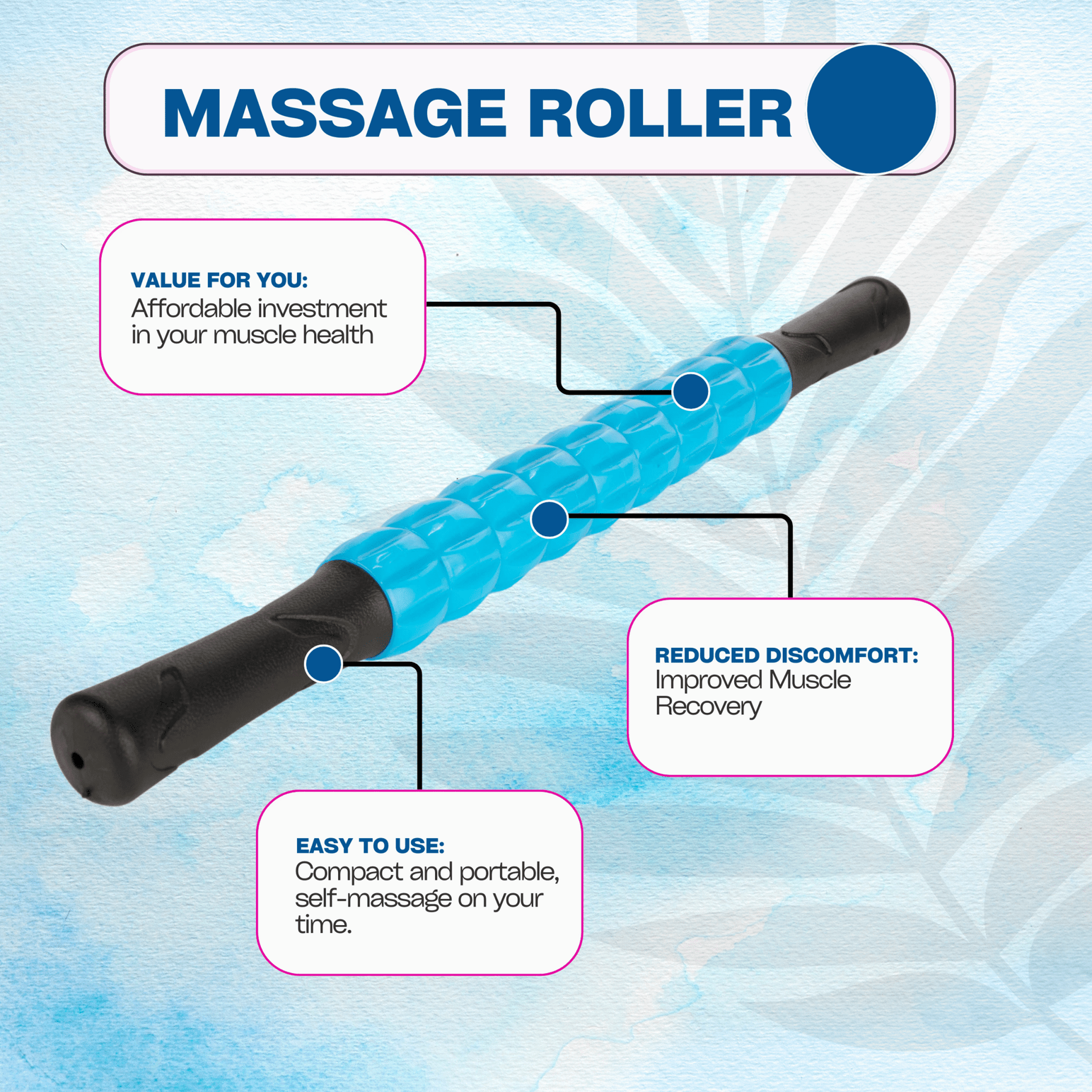
Ressources de récupération BBL
Comment utiliser le Lipo Roller après une liposuccion : un guide détaillé
- ##1 BBL Surgeon in Miami
- #10 years after liposuction
- #2023 BEST BBL PILLOW
- #2024 best bbl pillow bombshell booty pillow
- #2024 best bbl pillow for car
- #2024 best bbl pillow for driving
- #2024 best bbl pillow for plane
- #2024 best bbl pillow my booty pillow
- #2024 best bbl post surgery supplies
- #2024 best bbl surgeons miami
- #2024 cosmetic surgery trends
- #2024 plastic surgery trends
- #305 cosmetic surgery
- #360 ab board
- #AB BOARD POST SURGERY LIPOSUCTION
- #abdominal en tabla
- #affordable bbl surgery in miami
- #affordable bbl surgery miami
- #affordable lymphatic massage near me
- #Affordable Plastic Surgery
- #Affordable Plastic Surgery & BBL in Miami | Mia Aesthetics
- #after a bbl when can i sit
- #after bbl care
- #after bbl pillow
- #after bbl when can i sit
- #After Liposuction
- #Almohada BBL
- #almohada para nalgas
- #almohada postoperatorio glúteos
- #alternative liposuction
- #alternatives to liposuction
- #amazon bbl driving pillow
- #amazon bbl pillow
- #amazon bbl pillow for car
- #amazon booty pillow
- #amazon butt pillow
- #angela guerra massage
- #aossa bbl pillow
- #avocado bbl pillow
- #bbl booty pillow after surgery
- #bbl booty pillow near me
- #bbl butt pillow
- #bbl butt pillow near me
- #bbl massage
- #bbl massage near me
- #bbl massages
- #bbl pillow
- #bbl pillow after surgery
- #bbl pillow after surgery booty cushion
- #bbl pillow after surgery for booty
- #bbl pillow after surgery for butt
- #bbl pillow airplane
- #bbl pillow alternative
- #bbl pillow amazon
- #bbl pillow australia
- #bbl pillow austria
- #bbl pillow aventura miami
- #bbl pillow bed
- #Bbl pillow benefits
- #bbl pillow bundle
- #bbl pillow bundle package
- #bbl pillow california
- #bbl pillow canada
- #bbl pillow cheap
- #BBL PILLOW COMBO
- #BBL PILLOW COMPLETE PACKAGE
- #bbl pillow donut
- #bbl pillow driving
- #bbl pillow Florida aventura Miami
- #bbl pillow Florida Miami
- #bbl pillow for airplane
- #bbl pillow for auto
- #bbl pillow for automobile
- #bbl pillow for bed
- #bbl pillow for car
- #bbl pillow for car near me
- #bbl pillow for driving
- #BBL PILLOW FOR DRVING NEAR ME
- #BBL PILLOW FOR MEN
- #bbl pillow for plane
- #bbl pillow for sale
- #bbl pillow for sale near me
- #bbl pillow for sitting
- #bbl pillow for sleep
- #bbl pillow for sleeping
- #BBL PILLOW FOR THE PLANE
- #BBL PILLOW FOR TRANSGENDER
- #bbl pillow for traveling
- #BBL PILLOW FOR WORK
- #bbl pillow illionis
- #bbl pillow kit
- #BBL pillow Lakeland
- #bbl pillow lakelnad florida
- #bbl pillow las vegas
- #bbl pillow manufacturer
- #bbl pillow manufacturers
- #bbl pillow manufacturers in the usa
- #bbl pillow mexico
- #bbl pillow miami
- #bbl pillow Miami Florida
- #BBL PILLOW NEAR ME
- #bbl pillow nearby
- #bbl pillow new jersey
- #bbl pillow nj
- #bbl pillow ny
- #BBL Pillow Orlando
- #BBL PILLOW PACKAGE COMBO
- #bbl pillow pink
- #bbl pillow reviews
- #bbl pillow supplies beverly hills
- #bbl pillow supplies california
- #bbl pillow supplies houston
- #bbl pillow supplies lakeland
- #bbl recovery
- #bbl recovery bbl pillow
- #bbl recovery house in miami
- #bbl recovery houses in miami
- #bbl recovery kit
- #bbl recovery pillow
- #bbl recovery process
- #bbl recovery set
- #bbl recovery supplies
- #bbl recovery supplies list
- #BBL RECOVERY SUPPLIES NEAR ME
- #bbl recovery timeline
- #best bbl pillow 2024 bombshell booty pillow
- #best bbl pillow 2024 my booty pillow
- #best bbl pillow bombshell booty pillow
- #best bbl pillow bombshell booty pillow 2024
- #best bbl pillow for driving bbl pillow near me bbl donut pillow pillow butt lipo foam near me flattening abdominal board after lipo booty pillow after surgery lipo foam 360 pillow for buttocks venta de fajas colombianas cerca de mi brazilian butt lift pil
- #best bbl pillow my booty pillow
- #best bbl pillow my booty pillow 2024
- #best bbl recovery pillow
- #best bbl recovery supplies
- #best bbl surgery pillow bombshell booty pillow
- #best bbl surgery pillow my booty pillow
- #best booty pillow
- #BEST BUTT PILLOW
- #best epi foam by bombshell booty pillow
- #big booty pillow
- #big butt pillow
- #bombshell booty pillow
- #booty pillow
- #booty pillow alternatives
- #booty pillow bbl
- #booty pillow for bbl
- #brazilian booty pillow
- #Brazilian Butt Lift Booty Pillow
- #Brazilian Butt Lift Booty pillow (BBL)
- #brazilian butt pillow
- #butt pillow
- #butt pillow after bbl
- #butt pillow after surgery
- #butt pillow amazon
- #butt pillow bbl
- #butt pillow for after bbl surgery
- #butt pillow for bbl
- #BUTT PILLOW NEAR ME
- #BUTT PILLOWS NEAR ME
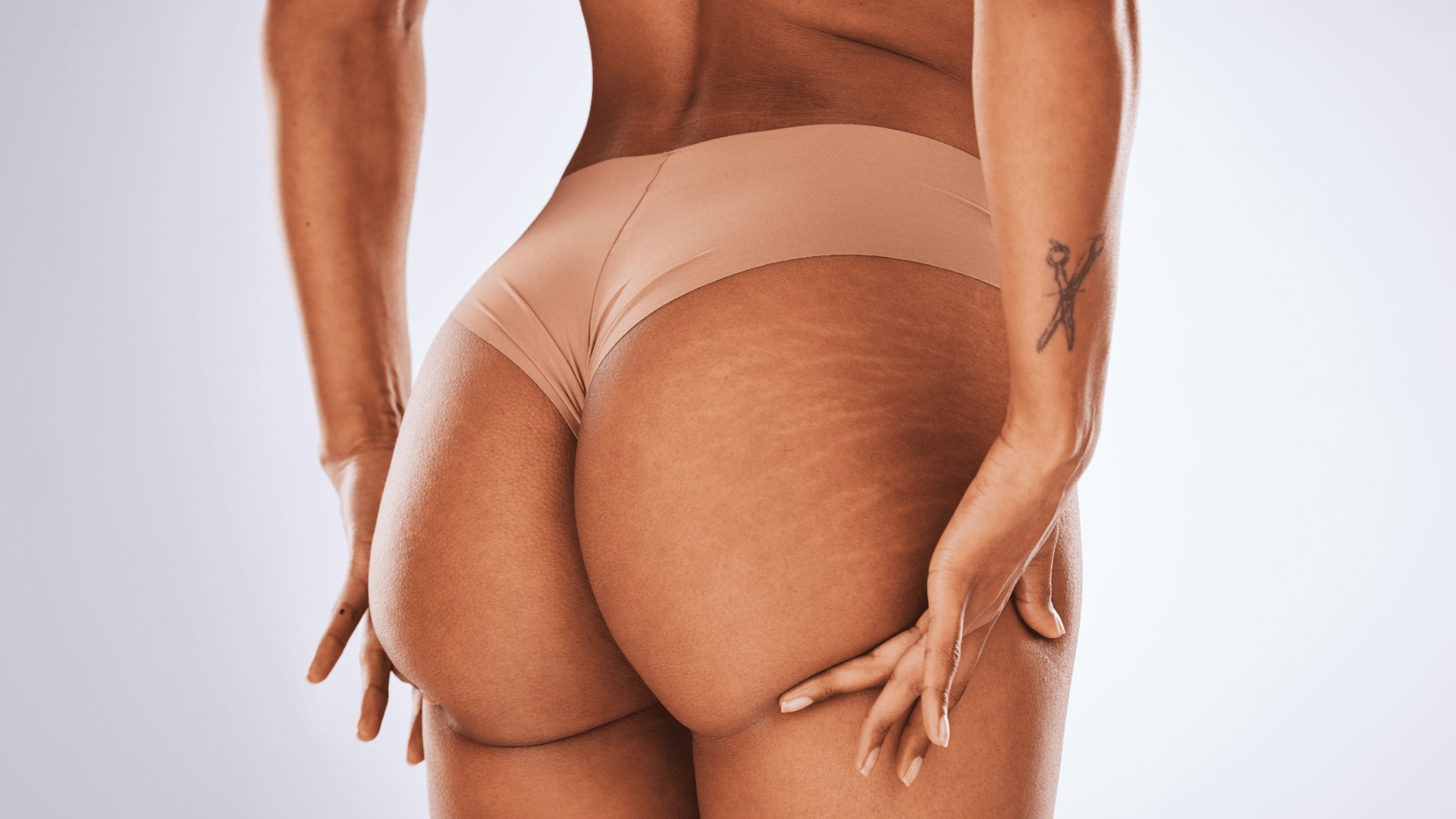
Ressources de récupération BBL
DITES ADIEU AUX FESSES PLATES ET BONJOUR À UNE VUE PLUS COURBÉE !
- ##1 BBL PILLOW
- #10 years after liposuction
- #2024 best bbl pillow bombshell booty pillow
- #2024 best bbl pillow my booty pillow
- #5 years after liposuction
- #ab lipo board
- #affordable bbl surgery in miami
- #affordable bbl surgery miami
- #affordable bbl surgery pillow
- #Affordable Plastic Surgery
- #Affordable Plastic Surgery & BBL in Miami | Mia Aesthetics
- #amazon booty pillow
- #are liposuction results permanent
- #atlanta BBL surgery
- #bad results coolsculpting
- #bbl after 10 years
- #bbl booty pillow after surgery
- #bbl booty pillow near me
- #BBL IN MIAMI
- #BBL PILLOW NEAR ME
- #bbl surgery
- #BBL surgery Arizona
- #BBL surgery atlanta
- #bbl surgery Australia
- #bbl surgery beverly hills california
- #bbl surgery boston
- #bbl surgery cali colombia
- #BBL surgery California
- #bbl surgery canada
- #bbl surgery cost near me
- #bbl surgery dubai
- #bbl surgery florida
- #bbl surgery germany
- #BBL SURGERY GONE WRONG
- #BBL surgery Illinois
- #bbl surgery in colombia
- #bbl surgery in dubai
- #bbl surgery in turkey
- #bbl surgery in uk
- #bbl surgery istanbul
- #bbl surgery Kentucky
- #bbl surgery kit
- #bbl surgery kuwait
- #bbl surgery las vegas
- #bbl surgery los angeles
- #bbl surgery massachusetts
- #bbl surgery md
- #bbl surgery meaning
- #bbl surgery miami
- #bbl surgery near me
- #bbl surgery nearby
- #BBL surgery New York
- #bbl surgery nj
- #bbl surgery ny
- #Bbl surgery pickup Miami
- #bbl surgery pillow
- #bbl surgery supplies
- #bbl surgery supply kit
- #bbl surgery supply list
- #bbl surgery switzerland
- #BBL surgery Texas
- #bbl surgery tijuana
- #bbl surgery uk
- #before bbl after 10 years
- #best bbl doctor in miami
- #best bbl pillow 2024 bombshell booty pillow
- #best bbl pillow bombshell booty pillow
- #best bbl pillow bombshell booty pillow 2024
- #best bbl pillow my booty pillow
- #best bbl pillow my booty pillow 2024
- #Best BBL Surgeons in Miami - Affordable BBL
- #best bbl surgery pillow
- #best bbl surgery pillow bombshell booty pillow
- #best bbl surgery pillow my booty pillow
- #best epi foam by bombshell
- #best epi foam by bombshell booty pillow
- #best kneeling pad
- #best pillow after bbl surgery
- #beverly hills BBL surgery
- #Beyond Beauty BBL Miami - Affordable BBL Surgery Price
- #body contouring
- #botched coolsculpting gone wrong
- #brazilian butt lift bbl in miami
- #brazilian butt lift surgery
- #butt pillow for after bbl surgery
- #buttock lift bbl after 10 years
- #california BBL surgery
- #can coolsculpting fix bad liposuction
- #care credit apply now
- #cheapest bbl in miami
- #clothes to wear after bbl surgery
- #coolsculpting bad results
- #CoolSculpting Before & After
- #Dolls Plastic Surgery
- #epi foam
- #epi foam pads
- #Get Your BBL by Top Surgeon
- #how long to wear lipo foam
- #kneeling pad
- #kneeling pads
- #lipo board pads
- #lipo foam pads
- #lipo gone wrong
- #liposuction alternatives
- #liposuction gone wrong
- #massage roller
- #Mia Aesthetics® Surgery
- #pillow bbl
- #pillow for bbl
- #pillows for bbl
- #Procedure BBL - brazilian butt lift surgery
- #Seduction Cosmetic Center
- #Semaglutide
- #Spectrum Aesthetics
- #top bbl doctor in miami
- #top bbl doctors in miami
- #top bbl dr in miami
- #top bbl surgeons in miami
- #Top Rated Tummy Tuck surgeon
- #Tummy Tuck Surgery
- #Voted Best bbl pillow
- #Voted Best plastic surgeon
